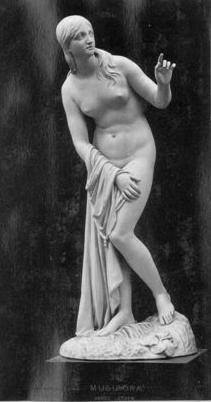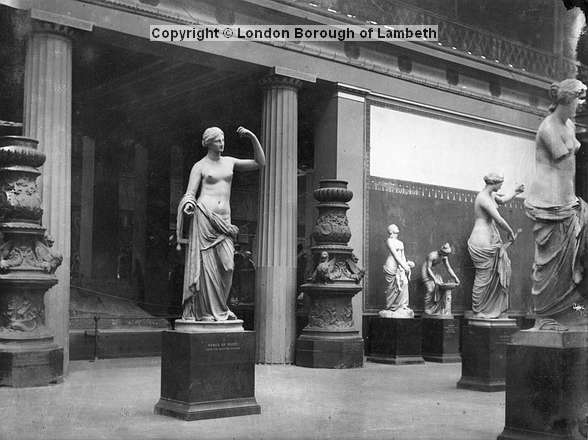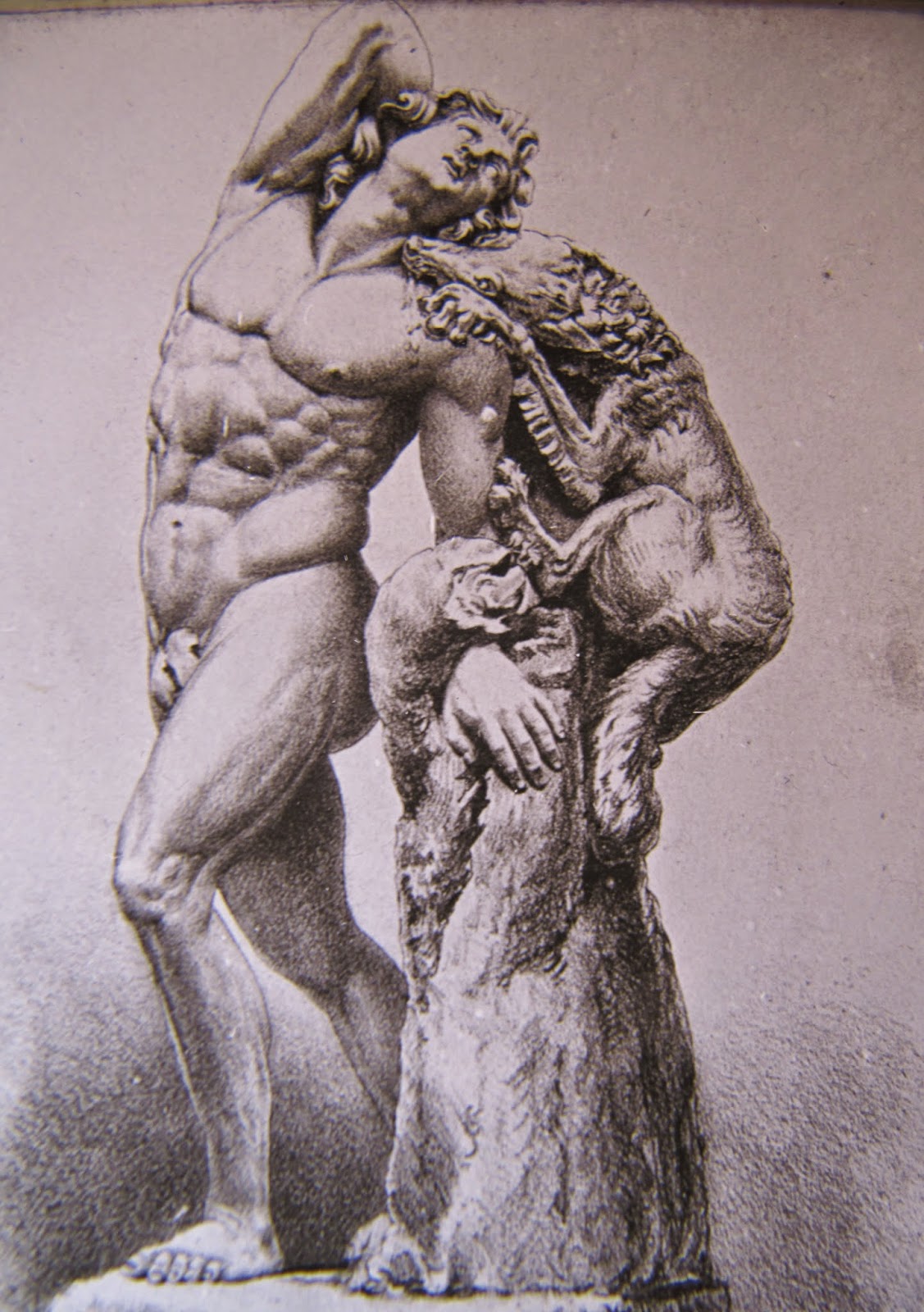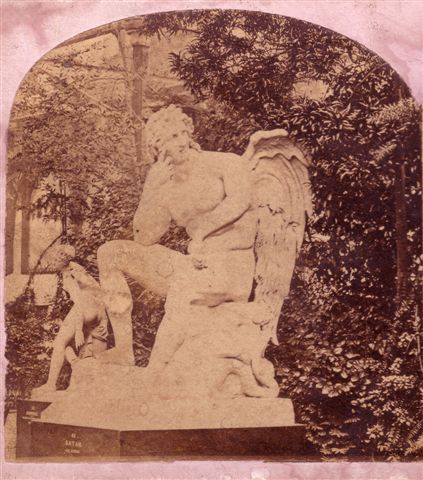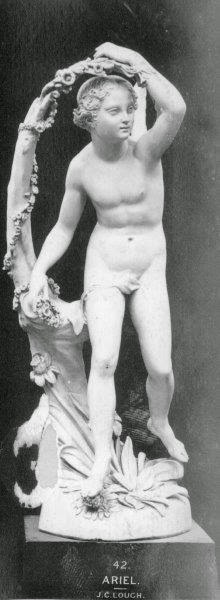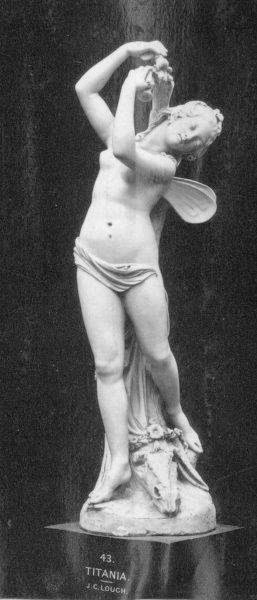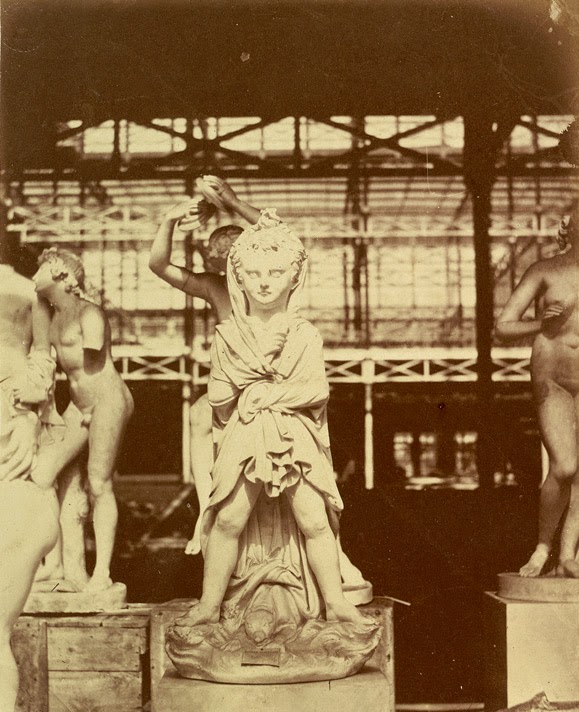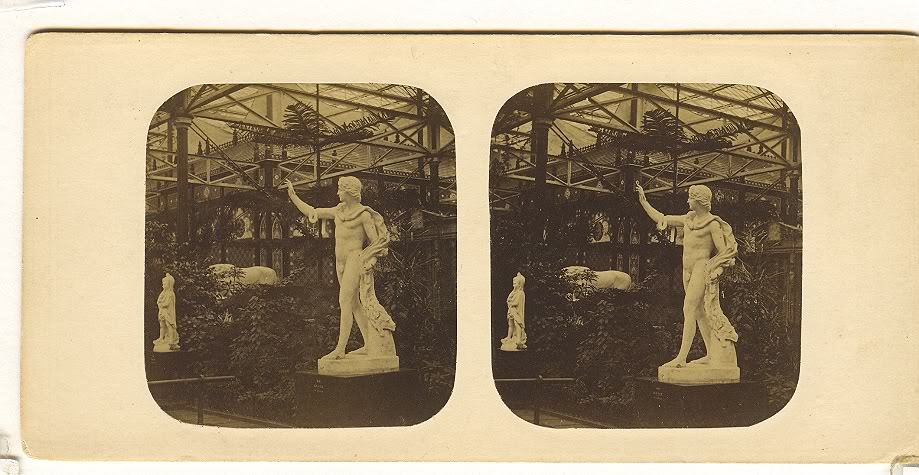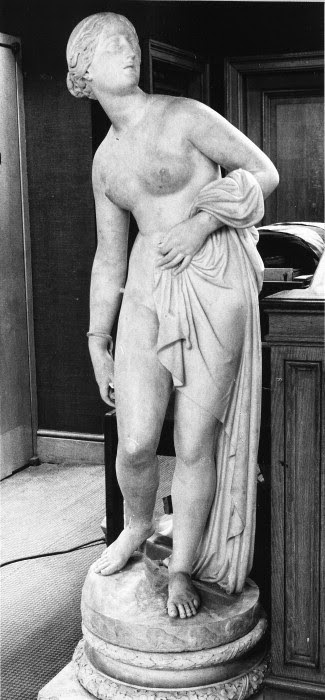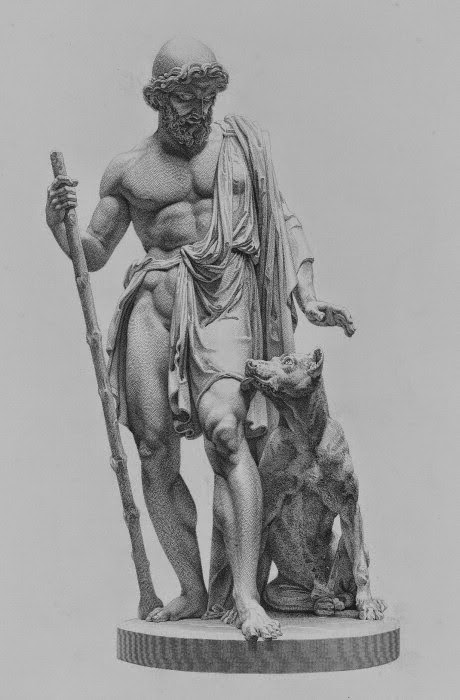IT IS OF THE SCULPTURE EXHIBITED AT CRYSTAL PALACE AT SYDENHAM FROM 1854 TO 1936 WHEN THE BUILDING WAS BURNT DOWN
EVEN MORE PICTURES TO FOLLOW.

"THE CRYSTAL PALACE AS A WINTER GARDEN."
As you can see the Crystal Palace building, in which the Great Exhibition of 1851 was held, was proposed even before it closed, as a permanent fixture in Hyde Park. Paxton's initial idea was as a winter garden full of plants and statues - and lots of the paying public of course!
The idea for an exhibition to promote world trade had begun before the building had been thought of.
Joseph Paxton, who came up with the design used, was gardener to the 6th Duke of Devonshire, and had experience of building huge glass building to raise exotic plants, while the Duke was also creating at the same time an important collection of marble sculpture.

Sculpture Gallery Chatsworth House
As Paxton came up with the original idea of a huge greenhouse, he naturally concieved of it in the future, containing more plants and statues!
He was only working for the Crystal Palace Company, [which transfered the building to it's permanent site in Sydenham] of which he was a director, but his thinking heavily influenced the design of the Palace at Sydenham.
Victorian sculpture is now extremely unfashionable, and few may be sorry that after the Sydenham building opened the statues started to migrate around the building, were packed away during the First World War, and completely disappeared during the fire of 1936.
All the statues described here, were present only in Sydenham in plaster casts, some had been copied in smaller porcelain and bronze versions and some never commisioned in a permanent material, and are now gone forever.
After the opening, it was natural that over the next 82 years only examples of the work British sculptors was added to the collection.
I have added all the later additions to the collection I can find, and anything added to the original text of the Handbook is in [square brackets]. Everything from other sources, later guidebooks and my own comments are not in comment boxes.
If anyone has information or images to fill the gaps - please feel free to add them on.
A
HANDBOOK
TO THE
COURTS OF MODERN
SCULPTURE
BY
MRS ANNA BROWNELL JAMESON
CRYSTAL PALACE LIBRARY
AND
BRADBURY & EVANS
11 BOUVERIE STREET LONDON
1854
INTRODUCTION
The following Catalogue of the works of art assembled in the Courts of Modern Sculpture, being intended for the public at large, has been made as clear and as comprehensive as was possible within the prescribed limits of space and time. If I venture to introduce it by a few prefatory observations, it is not for the purpose of dictating to those who assume in art the right of private judgement and of deciding to their own contentment what they like, and what the do not,- but in the first place, to explain the sense in which I have used certain terms, which otherwise might be misunderstood, ans secondly with a hope of leading the mind of the observer to certain considerations which may be suggestive of added pleasure, and a more refined and discriminating judgement; for unless we know what to require, we cannot do justice to the artist who has sought in his own way to meet our requirements.
We will begin with a definition.
The word SCULPTURE (from sculpo, to carve,) signifies whatever is cut or carved into shape. We apply the word technically to all the productions of the plastic or formative arts: that is to say to all imitations of natural forms fashioned out of any solid material, whether they be modelled in clay or wax, cast in metal or gypsum, carved in wood or ivory, hewn in stone or marble. And we distinguish the productions of sculpture considered as one of the fine arts under two divisions: in the first we comprise all insulated and complete figures single or grouped. These we call in a general way STATUES; they may be standing, seated, or recumbent. In the second division, we place all figures which are partly raised on a flat plane, which we style in a general way BAS_RELIEFS. But when we would describe accurately we distinguish between - I. BASSO-RELIEVO, or low relief, where the figures are slightly projected (as in No. 200. - II. MEZZO-RELIEVO, half-relief, where half the figure appears as if sunk in the block, and half above it (as in No. 226). - III. ALTO-RELIEVO, plein-relief, high-relief, where the figure is almost detached from the plane behind - standing out from it, though still not wholly detached from it (as in No. 172). In the mediaeval sculpture, and the modern imitations of it, we find a mixed style, in which all the three degrees of relief are used - and the figures in the background, being in very flat relief, those in the middle ground in half-relief, and those immediately in front in high-relief (as in No. 109).
Now itmust be evident to those who use their reason in the observation of works of art that Sculpture, dealing with forms in solid material, must be very different from Painting, which describes with lines and colours on a flat surface; that the aims of each art are distinct; that each has its capabilities, its limits, and its laws, and that these being founded on antural laws cannot be infringed with impunity. Coleridge defined painting as "a somewhat between a thought and a thing." Sculpture is a thought and a thing. Painting is not what it seems; sculpture is a reality: painting produces its effects to the eye by differences and varities of colour, by gradations of distance, by multiplied figures. Where sculpture pretends to such manifestations (as in some of the mediaeval and modern bas-reliefs) it is apt to wander beyond the legitimate bounds which truth and taste have assigned to it; and that which constitutes its essential excellence and real character is diminshed in proportion as it assumes the powers, and proposes to itself the aims of painting, an art which works with different means, and has a far wider range of imitation and representation than that commanded by the art of sculpture.
I have begun by this definition of what sculpture is, and what it is not, and have dwelt a little upon the distinction, because the first principle with which the observer must start, is this:- never to confound the laws and the objects of two arts so perfectly distinct as sculpture and painting, but to consider well the kind of pelasure and the kind of representation which he shall require from each.
One of the first considerations of sculpture is the MATERIAL. In modern times we use the same materials which were in use in ancient times; nor does it appear that we have improved on those mechanical processes which ensured completeness, beauty, and excellence of workmanship, though we have some scientific and mechanised inventions which have facilitated imitation and cheapened material; and with regard to material, we should observe that the management and capabilities of different substances are considerations of great importance; that figures which look well in one material do not look well in another; that metal requires a different treatment from marble, and is fitted for purposes where marble would be misplaced.
All the specimens of sculpture here (both ancient and modern), are casts made in gypsum (plaster of Paris), and the hard, opaque plaster is so differnt in effect from the delicate semi-transparent marble, which under the master-hand seems actually to soften into life, that, in judging of some admired works, this difference must be taken into consideration.
SIZE is another of the external conditions of sculpture, which must be well-considered. Many subjects which are extremely graceful and ornamental, of small size, become repulsive when enlarged. When a figure is rather above nature, we style it heroic, when much above the natural height, it is colossal. If a statue be half the size of life, or less, it is called a statuette. Some of the natique colossal statues may be diminished into statuettes, retaining their grace, and even their sublimity; but a subject originally concieved of a small size can seldom be enlarged to colossal dimensions.
The LOCALITY for which a statue is intended is also of great importance; whther for a church, a temple, a hall, a gallery, a room, a garden; whether for a high or low situation. A statue which is to be placed in the open air, or to enter into an architectural composition, or to form part of a sacred monument, or an historical memeorial, requires a different treatment from one which is to decorate a room in a palace. The Milo of Puget (No. 117) was placed in a bocage at Versailles; the Nymph (No. 168) in a public garden; the Angel (No. 67) in a church: all are calculated for height or distance. A central situation in a large space requires that the figure and attitude should display beauties in every point of view.
the management of bas-relief requires great skill, that neither the figures be too numerous not the lights too multiplied and broken, for then we lose distinctness. Simplicity therefore is one of the necessary conditions of a fine bas-relief. In modern times, Thorwaldsen and Gibson have perfectly succeeded in the classical bas-releif treatmet. No. 299 and N0. 26 are examples of exquisite adaption, in this style.
The compostions by Geefs from the life of St. Huber (no. 109) should be compared with these, as beautiful examples of a wholly different style - the rich pictorial treatment of Gothic sculpture - in which the differnt degrees of relief are blended.
The foregoing remarks apply to sculpture generally, whatever be the subject or style. We will now turn to more particular criticism.
When we contemplate a work of sculpture we first require to know what it represents; we ask waht it is that the artist has intended to place before us. Sculpture is much more limited in regard to SUBJECT than painting - a condieration we must carefully keep in view; for very frequently, a work of sculpture is displeasing, not from any fault in the execution, but because it represents that which is essentially unfitted for sculptural treatment. Tam O' Shanter and Meg Merrilies are admirable creations in their way, and well fitted for painting, but we are shocked at the idea of these figures in bronze or marble.
We should be able, in looking round these courts of modern sculpture, to designate the subject, its appropriate conception and artistic treatment.
The subject is classical when it is selected from the ancient mythology and poetry. Thus Cupid is a classical subject, whether treated a l' antique with Greek simplicity and consummate purity of taste (as in No. 23), or with modern sentiment (as in No. 122). There are writers who lay it down as a principle that sculpture should be confined to the same class of subjects, regarding all others as deviations into barbarism. this is a mistake which leads to formality and conventionialism. It is the ultra-conservatism of art. Whena sculptor, from a native taste, chooses classical subjects for his peculiar walk, he is right to follow out the bent of his own genius, but not to restrain within the same limits the taste and genius of others. On the other hand it is equally a mistake, and a much more vulgar mistake, to imagine that anything sculpture can do, it may do.
a man whose education and habits of life have never led him to form classical associations in art or literature, says very naturally, "I do not like your undraped gods and goddesses; I have no sympathies with them: what are Venus and Apollo to me? Why are we to be ever haunted with these symbols of a dead religion? Nature is not exhausted of her beauty. Life speaks to us through a thousand aspcts. Choose me out of these infinite manifestations something i can recognise as truth, something I can feel and understand!"
The educated man, the classical scholar, replies "It is well; - let us have truth in art by all means, but what is your truth, my friend, is not mine. A fact taken from the accidents of common life is not a truth of universal import, claiming to be worked out by head and hand with years of labour, fixed before us in enduring marble - in the immutable forms of sculpture. True, the gods of Hellas have paled before a diviner light; 'the great Pan is dead.' But we have all some abstract notions of power, beauty, love, joy, song, haunting our minds and illuminating the realities of life; and if it be the especial province of sculpture to represent these in forms, where shall we find any more perfect and intelligible expressions for them than the beautiful impersonations the Greeks have left us? It is not the sea-born venus, but beauty and love, and it is not Athena with thoughtful brows beneath her helmet, and aegis-guarded bosom, but womanhood armed in chastity and wisdom, - which stand before us; with these have we not sympathies strong, and deep, and pure? When will the enchanting myth of Psyche
'That latest born and loveliest vision far
Of all Olympus' faded hierarchy'-
ever grow old and worn-out to the fancy? Not while we have souls to love, to suffer, to aspire? To an English farmer, a plough biy in a smock-frock, guiding his team along the furrow, conveys the idea of agriculture. To the educated fancy all over the world the same idea is conveyed in a more universal sense, by the benign maternal Ceres, holding her wheat-sheaf. Which is the more beautiful? Half a century ago the fashion was all in favour of paganism in sculpture; now the popular feeling runs so against it that it gives rise to the most obvious absudities. Sculptors who have seized and worked out classical ideas are afraid to give them classical names; a figure of Orpheus is 'A Violin Player;' a Cupid and Psyche become 'A Boy with a Butterfly;' Apollo, as the hepherd, is 'A Boy at a Stile;' and instead of the 'Oread and Dryad fleet,' or Naidad of the stream, we have 'Nymphs preparing to bathe,' and these without number, in differnt degrees of drapery. Surely we are in a pitiful condition a to education, is such subterfuge be necessary or acceptable!"
In modern art a clasical subject is not always (or rather, is very raely) concived and treated in a purely classical style; far oftener the imitation of the antique manner degenerates into the cold or conventional - and what the French call "style academique," "style de routine." On the other hand, some of our modern artists have infused into the forms of the nacient mythology a sentiment and a significance which we do not find in Greek art - not differnt, but deeper - (as in No. 82 and No. 2190. This new version of some of the lovely Greek myths, when directed by high feeling and a just tatste, is capable of more variety than artists are aware of.
Opposed to classical subjects, we have in modern sculpture sacred subjects; so we call all those which are suggested by the venerated Scriptures, and it is not without reason that the people delight in such. In these days we should treat religious subjects religiously; an angel should resemble neither a nymph nor a Cupid. There is, however, no necessity, as some appear to think, that Scripture subjects should be reproduced in the early mediaeval style, in the imperfect or stiff forms which belonged to a past and undeveloped state of art, interesting in may ways, not only to the antiquary but to every thinking and religious mind. The Scripture subjects are few, which allow of a figure undraped or half draped, or that display of the beautiful min and the noble in human form which is the province of sculpture. there is , indeed, the figure of Eve for the female form; David as the Shepherd, and the Prodigal Son, for youthful beauty and pathos; and many such will be found here. It is a pity that statues of the Mother of our Lord should be (from unhappy religious dissensions) repudiated by so many Christians, for she is a beautirul sculptural subject. there is a Pieta here, by Rietschel (196), which, for tenderness and religious sentiment, will strike everyone, and it should be compared witht he earlier treament, as that of Michaleangelo in the renaissance Courts, and those of more ancient date placed in the Mediaeval courts.
But beyond the limits of classical art and sacred art, modern sculpture has still a wide range. the whole range of mdern poetry and history is around us to select from. SOme artists and critics are of the opinion, that, when a subject is chosen from a modern poem or cemmerates a modern personage or a modern event, it must, nevertheless, be expressed in the classical manner, and even draped in the costume of the Greek or Roman classical times. This appears to me a mistake: for we see many examples here that such a subject may be treated within the just limits of sculpture, yet concieved with a feeling wholly distinct from that which we recognise in Greek art. In the following catatlogue i have styled those subjects POETICAL - the word is not well chosen, perhaps, for what is art of any kind if not poetical? - but I could find no ther word to express those creations suggested by modern associations and poetically but not classically concieved. Dante's Beatrice (No. 31), Miltons Sabrina (No. 51), Spenser's Una (No. 5), are examples of poetic subjects which are neither classical nor sacred; they belong to romantic, in contradistinction to classical art. The taste of the sculptor and his knowledge of the capabilities of his art are shown in the choice of such modern subjects as are suseptible of chaste and elegant sculptural treatment - for all are not so.
There are many subjects here which cannot be designated as classical, or sacred, or poetical. They do not express an idea, they reather aspire to represent in a more dramatic way, and often with the assistance of accessories, certain characters, actions, scenes; such compositions I have termed PICTURESQUE because they merge on the domain of paintin; No. 94 and 46 are eminent examples. the taste of the present day runs in favour of picturesque and romantic subjects in sculpture, and of classical and sacred subjects treated with that picturesque sentiment (or sentimentality), which we owe to the Renaissance school.
Another class of subjects we may style monumental and historical; such are portrait statues, memorials of real events, sometimes treated with exact sculptural taste and simplicity, sometimes with all the pretensions of the picturesque. We have here striking examples of both, as in No. 29 and No. 92.
Strictly speaking, modern sculpture would comprise all that is not antique scxulpture. But for the purposes of critical discrimination, we divide the history of sculpture into five periods.
1. that which preceded the highest development of Greek Art, comprising the Egyptian, Ninevite, and Lycian remains.
2. What we call the "Antique," comprehneding all the sculpture of the Greek and Romans, down to the complete subversion of the Roman empire; that is from about 700 years before Christ, to the sixth century of our own era.
3. Mediaeval sculpture, comprehending all those productions of the art, which date from the sixth to the twelfth century. During this time we find sculpture schiefly in alliances with architecture,and almost entirely devoted to religious purposes. The examples which remain to us of this period we call Byzantine and Gothic: they are ofetn curious for their significance, and interesting from their sentiment, but as far as knowledge of art, or elegance of form is concerned, they must be pronounced crude.
4. The period which we style the Renaissance (revival) comprehends all the productions of sculpture from the revival of literature and art in the fourteenth tot he end of the seventeenth century. In the beginning of this time the art was strugglinh between a newly awakend admiration for the beautiful remains of antiquity, and an ignorance of the principles on which they were produced. There was a leaning to the picturesque and Gothic in style, redeemed by exquisite grace and elevated feeling, and often by an elborate elegance of execution. But by degrees, as the real spirit of antique art was misapprehended, and imitation of nature was neglected, and even contemned, the tatse became more and more mistaken and depraved, and reached its utmost point of caprice and degradation in the works of Bernini and his followers, towards the close of the seventeenth century.
The observer will find in the various Courts of Architecture and Sculpture, - Assyrian, egyptian, greek and Roman, Byzantine, Mediaeval, Renaissance - specimens of all the periods here mentioned, from the human-headed bulls of Nineveh, down to the "Nymph of fontainebleau."
5. Modern sculpture (to which we are limited in this Handbook), dates from the close of the seventeenth century to the present time [1854]; but till the middle of the eiteenth century, and even later, the influence of thelate Renaissance school, more or less modified by national or individual influences, reigned paramount. A style at once pompous and fantastic, that of Louis-Quatorze, pervaded the arts of Eurpoe. In the beginning of the last century there were no schools or ateliers of sculpture but the French. the most celebrated was that of Pajou. Between 1700 and 1750 we find, in england, Rysbrach (a Fleming) and Roubilliac (a Frenchman), in possession of all the patronage of the country. In France, Pigalle, Falconet, Lemoyne, and Slodaz, carried as far as possible what we call the ""Louis Quinze" style. In Italy they had Corradini, who frittered away his undoubted talents in laboriuos frivolities.
Such was the state of things, when, in the middle of the last century, and within a year or two of each other, two men were born, destined, though each in a differnt way, to exercise an incalculable influence on modern sculpture. Their reception had been prepared by the critical essays of Winclemann, the founder of a new and purer code of taste and criticism, afterwards carried out by Lessing and Goethe. canova was born in 1752, and Flaxman in 1755. The first, a Venetian by birth, seems to ahve inherited that love of genial nature which distinguished the Venetian painters: hampered by the Bernini school in which he had been educated, and awakened to the comprehension of the antique art, we find him all his life struggling under these combined - sometimes opposite - influences, but never wholly emancipated into originality or truth. It is now just to Canova, to consider his faults in the light they appear to us now; they are, in a mitigated form, the faults which belonged to his time: compared with those who have come after him, hios mistakes and abberations of taste are apparent; compared with those who preceded him (such men as Corradini, Pigalle, Lemoyne), his tatste was pure and aims were noble. Canova was generally admired in his time as Bernini had been in the preceeding age, and exercised as wide a sway. But since his death his influence has declined; and in proportion as purer and more elevated principles of art have become better understood, his tendency to the picturesque, the sentimental, and the meretricious haas diminished the value of his works.
Far different has it been with our English [John] Flaxman [1755-1826]: he did not in his life-time rule the world of fashion nor of art; his work in marble are not numerous, for the patronage he recieved was in no9 respect commensurate with his merit; but he had early learned to understand and feel the principles of Greek sculpture, and his taste had never been vitiated by the florid inanities of the French school. His published outline compositions from the works of Homer, Aeschylus, and Dante, being spread all over Europe, and more especially in Germany, had a lasting effect in forming a new generation of artists.
[Bertel] Thorwaldsen was the next great name: arriving at Rome, an obscure young man, twenty years younger than Canova, and at a time when the great Italian artist had reached the highest pinnacle of his celebrity, he was never lisled by his example, nor subjugated by his influence; he held himself apart, not emulating Canova, but openly, and with a quiet power contending with him for the prize of excellence. it was remarked that whatever statue or ggroup, a l' antique, proceeded from the studio of Canova, Thorwaldsen soon produced his version of the same subject, in a spirit altogether different, as if in defiance; we can compare here the venus of Canova (no. 131) and the Venus of Thorwaldsen (No. 217); and it will be instructive to do so, to mark how the divinity of the latter transcends the fine lady graves of the former. the rival groups of "the Graces" should also be compared. some of the pupils of Canova have avoided his defect (affectation and prettiness), and carried his distinctive excellencies 9beauty of workmanship and classical elegance), far higher than he ever did, but no artist formed in the school of Thorwaldsen has ever surpassed or equalled him in the inventive poetry of his art: he excelled particularly in bas-relief, in which no modern sculptor but Gibson can be compared with him; there are many beautiful examples from both in this collection.
in looking over the Courts of Modern Sculpture, we cannot but be struck by some national charateristics. In the English school of art, with some brilliant exceptions, the general faults are negative, - a want of largeness of style, a poverty of invention, a want of fire and vigour in conception, and of elegance in execution, of which we have reason to be proud.
In the French school we are struck by the presence of all those merits in which we are most deficient, but there is a tendency to the capricious, the sensual, the meretricious, from which our own sculpture is entirely free. I remember in the Great Exhibition of 1851, being struck, as all were struck, by the wonderful elegance, fancy, and invention displayed in the French sculpture, including the ornamental bronzes - by the careful design and finished execution of the most minute, as well as the larger objects. but we were also struck by the predominance of the volutuous and the ferocious sentiment in some of their finest designs - the humane feelings, the moral sympathies, outraged on every hand. the appetite for sensation is as obvious in french art, as in their drama and literature; all react on each other.
In the German school we are struck by power and poetical feeling, and by a largeness of style, but also frequently by exaggeration and the want of grace and repose.
In the German school there are two schools of art of great celebrity. the berlin school, at the head of which is Rauch, has taken a direction towards natural and individual character, excelling in busts, portrait-statues, and what I have called the monumental and historical style, though not confined to these. the Munich school, which owns Scwanthaler as its chief, aims more at ideal representation and mythologic and poetic subjects.
In the best Italian examples there is much fire and poetry of conception and delicacy in the treatment; the faults most predominant in the Florentine and Roman schools are feeblenes and mannerism. it will be remarked that the Milan sculptors, who rank high in point of originality and talent, have taken a decided turn to the romantic and picturesque style of art.
In the English collection we have to regret the absence of any works of Flaxman, Chantrey, Banks, Foley, and some others. Among the French Sculptors, we miss bayre and Henri de triqueti. Among the Italian names we do not find that fo Tenerani. but we trust to see all these represented here in due time.
It has been necessary to ake some critical remarks: they have been made reluctantly, but most conscientiously. It was the request of the Directors [of the Crystal Palace Company] that this Catalogue should serve as a guide in some respects to the public taste. Therefore it is that the few criticisms which have been made, apply to the works of sculptors of eminent talent and established fame – for only criticism illustrated by such examples can be just, merciful, or useful – and it is ventured here with a deep feeling of responsibility, and of the true interests of art and artists. In none of the fine arts does such an amount of ignorance prevail as in sculpture. It is a universal complaint with sculptors, that they are forced to deviate from their own convictions of the true and the beautiful, to please the unrefined taste of patrons. Let those who wish to learn, come where: such materials for comparison and delightful contemplation were never before brought together to educate the mind and eye of the oublic.
Several works of Sculpture have arrived too late for insertion in this edition: other only just in time to be named, but not described or illustrated. All these will be noticed at length.
NOTICE
The works of each sculptor will generally be found grouped together, as nearly as has been possible.
The principle works of Gibson, and of those artists of the English school who have studied or resided at Rome, including Wyatt, Macdonald, Crawford, Spence, and Theed, will be found arranged round the western end of the Great Central Transept.
The works of Bacon, Baily, and Lough, are placed at the south end of the Nave. In this part of the Nave, and nearer the Great Transept, are placed various works of the English and German schools: the English, on the east or garden-side; the German, on the west, or road-side.
On the right of the Great Transept, as we enter from the west, is the court of German and English Sculpture, where besides the colossal Franconia, and the head of Bavaria, will be found a collection of Bas-reliefs by Thorwaldsen, Schwanthaler, Gibson, &c.
Opposite to this court, on the Garden-side, is the Court of Italian and French Sculpture, including the works of Monti, Rosetti, Dantan, Fraikin, Pradier, &c.
NOTE
The Modern Sculptures are numbered with black figures.
The Busts in the Portrait Gallery with red figures.
The Sculptures in the Greek and Roman courts with blue figures.


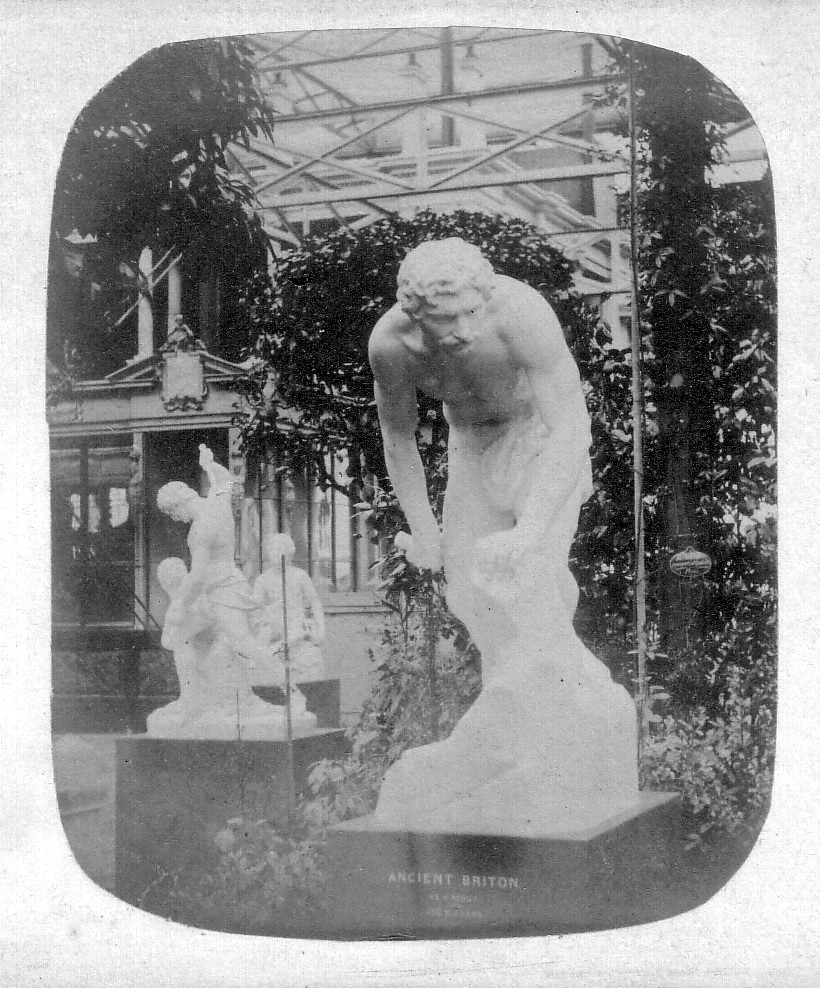

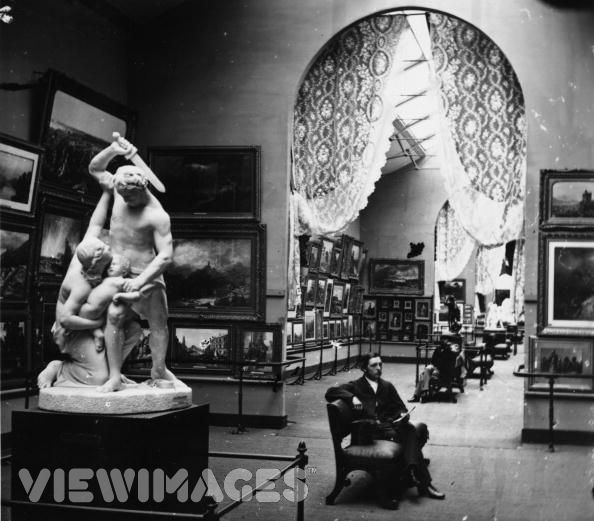
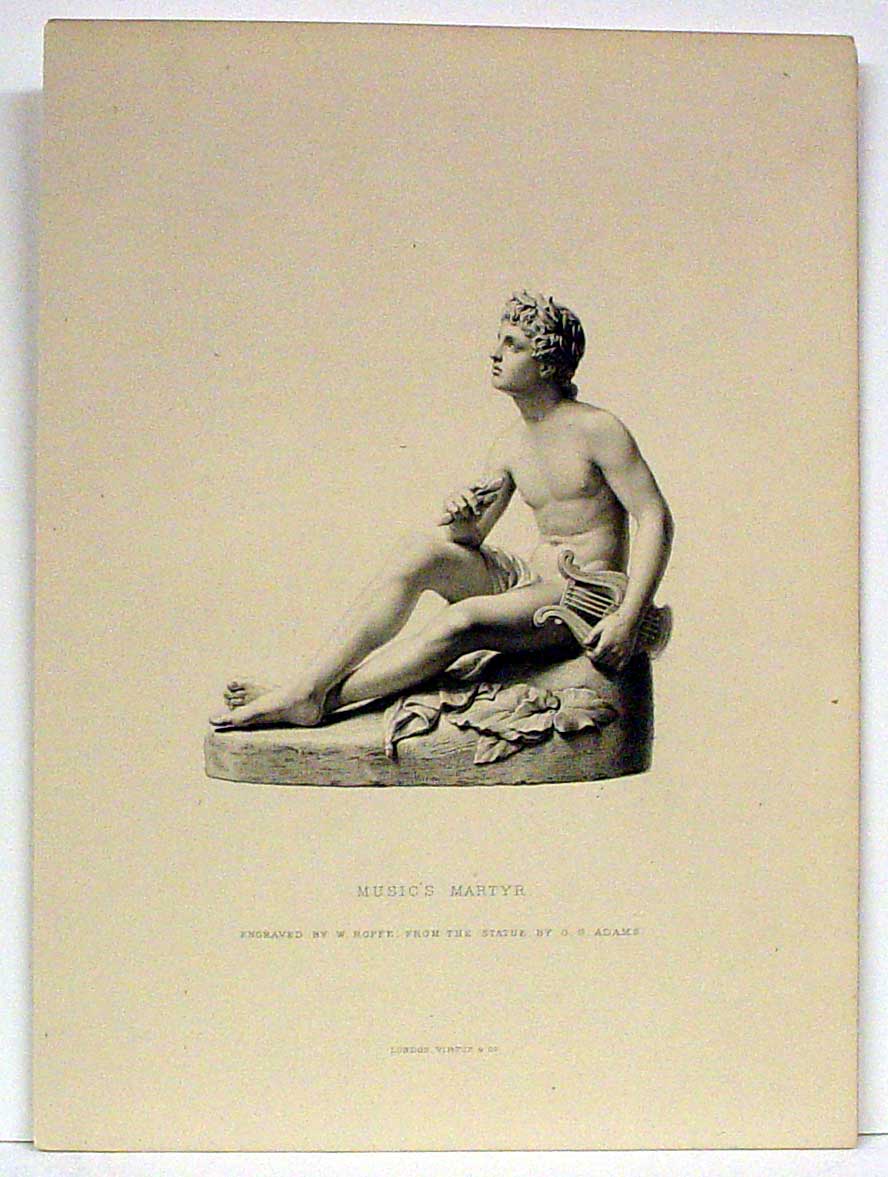
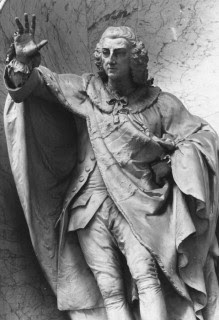
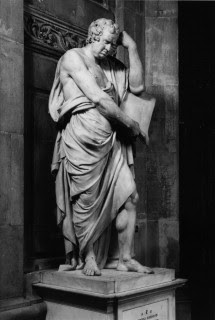

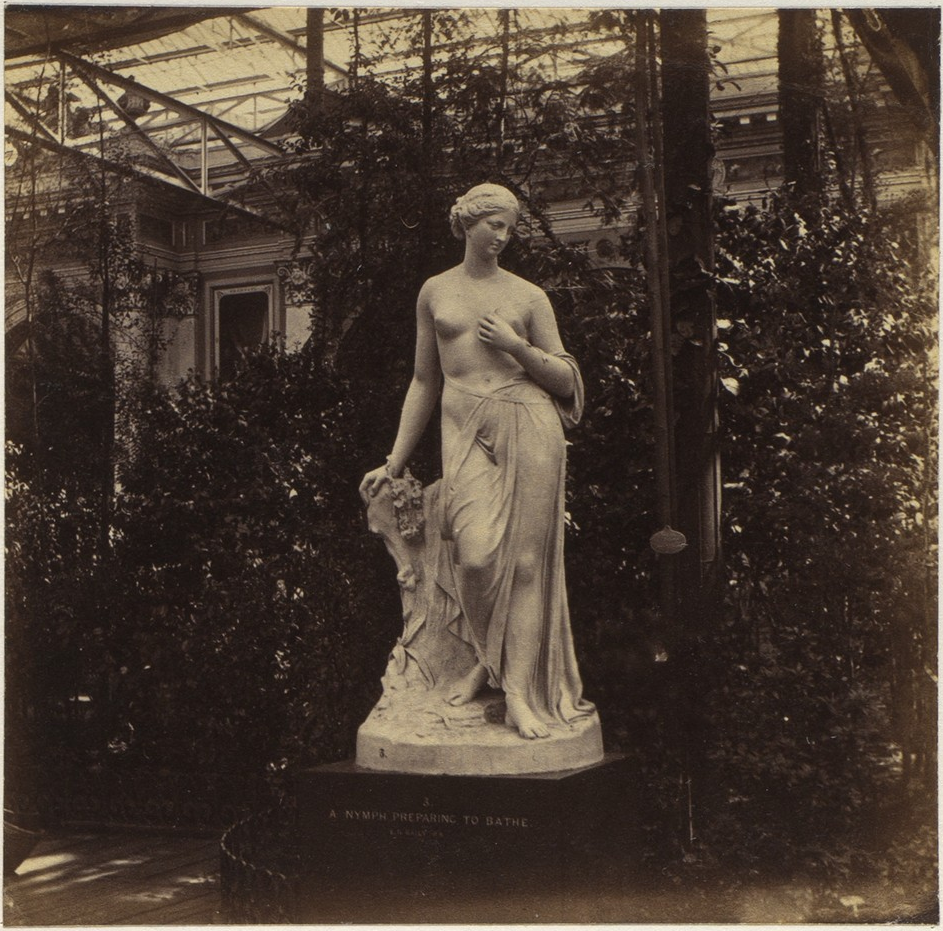

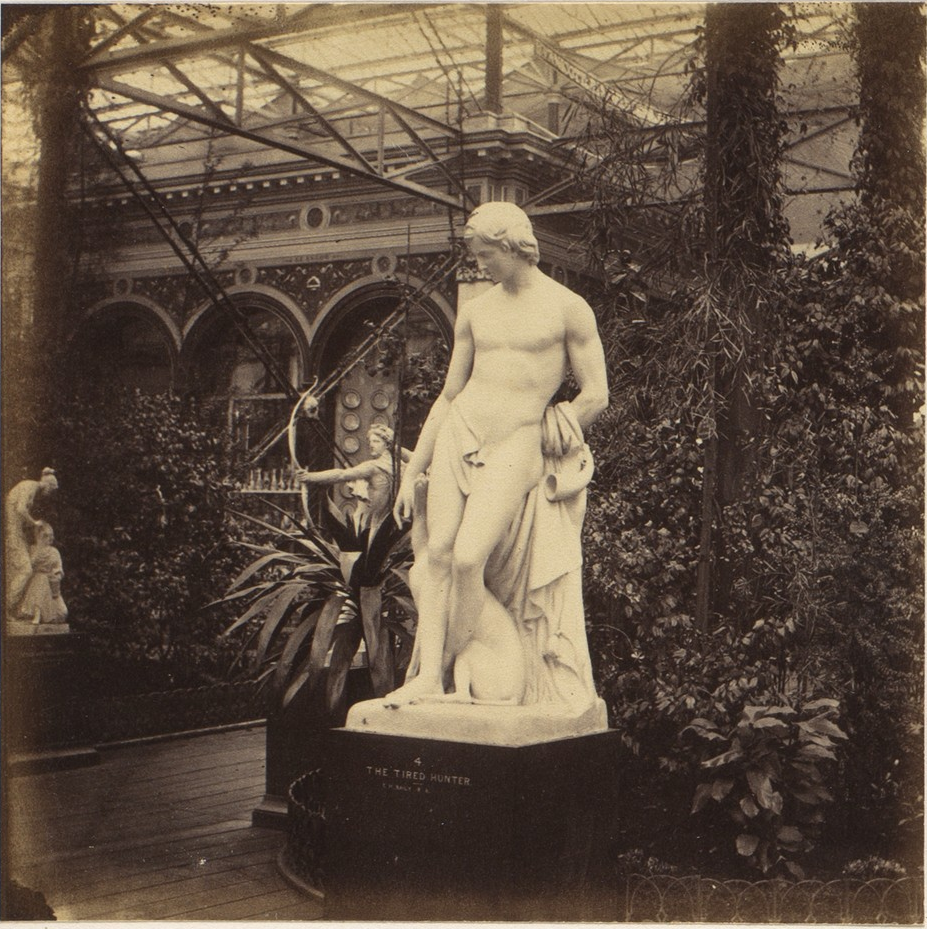



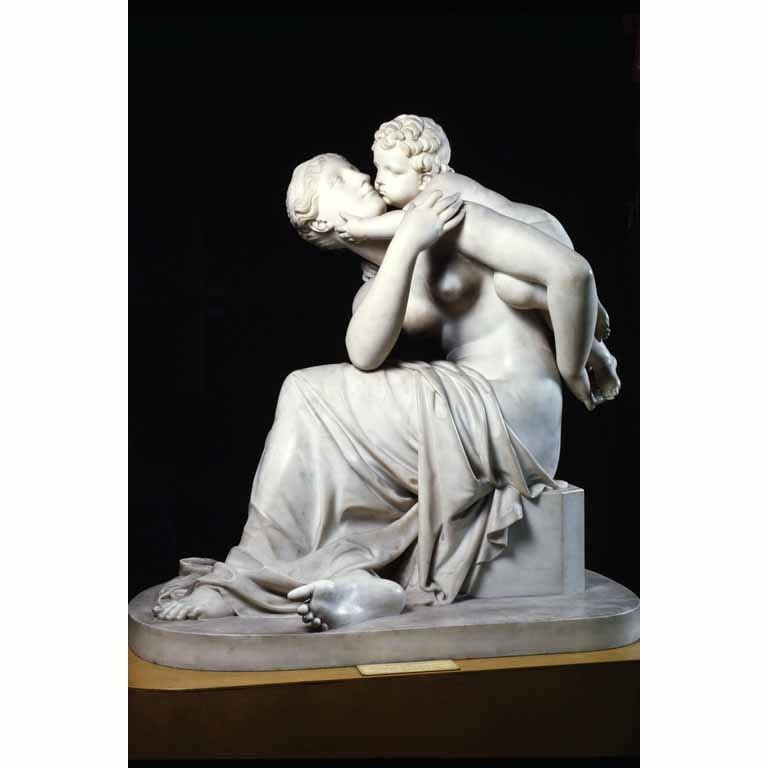
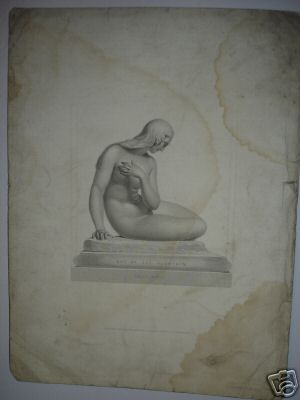
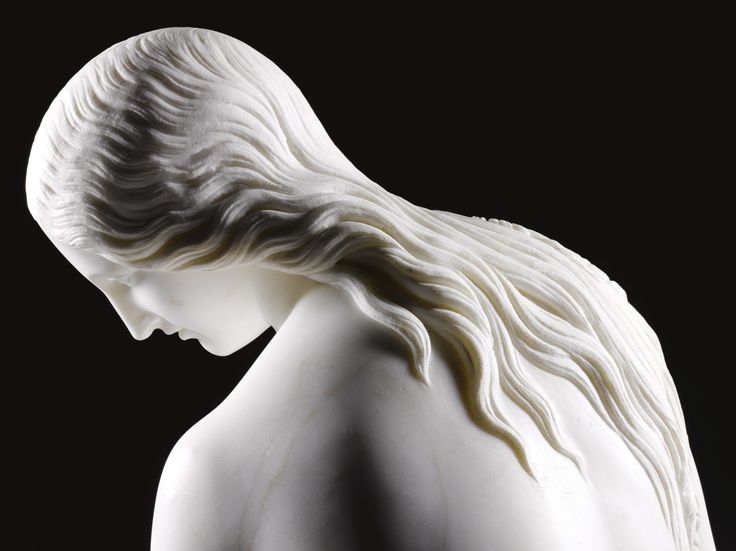
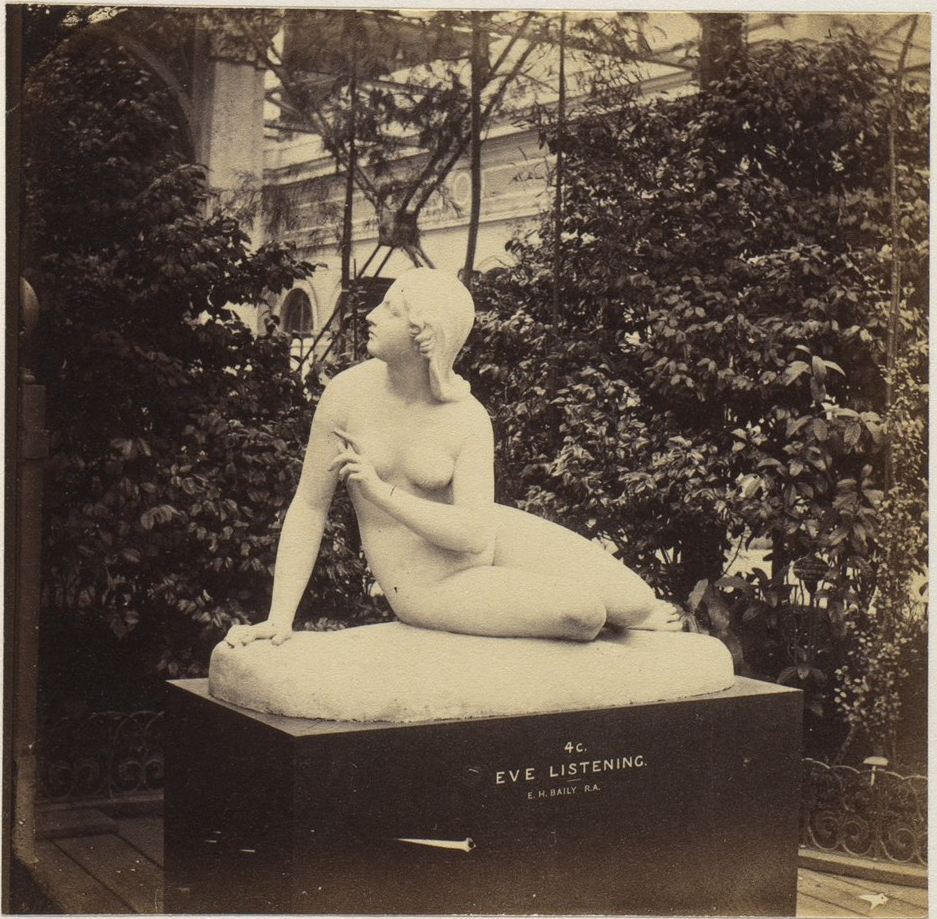


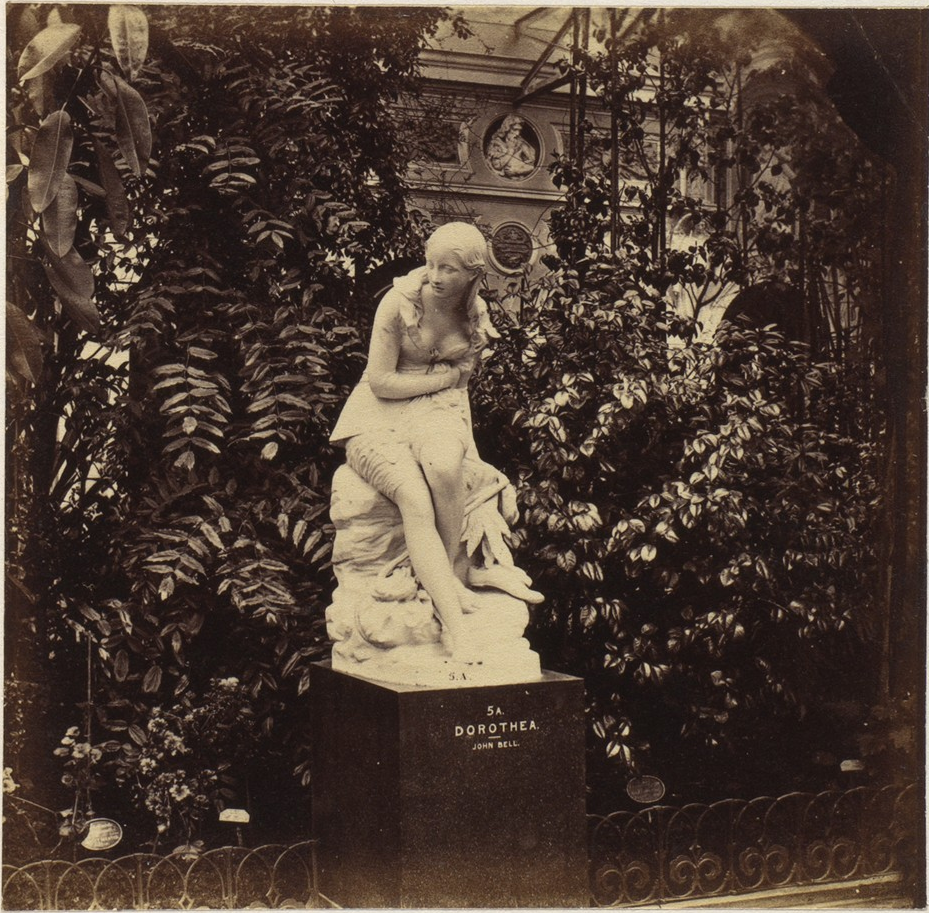


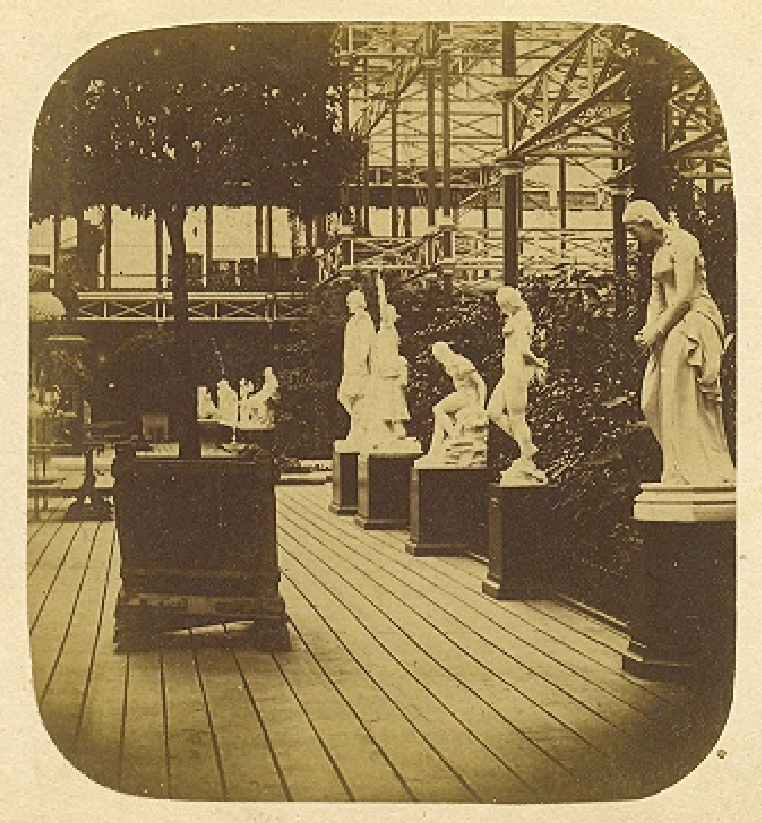
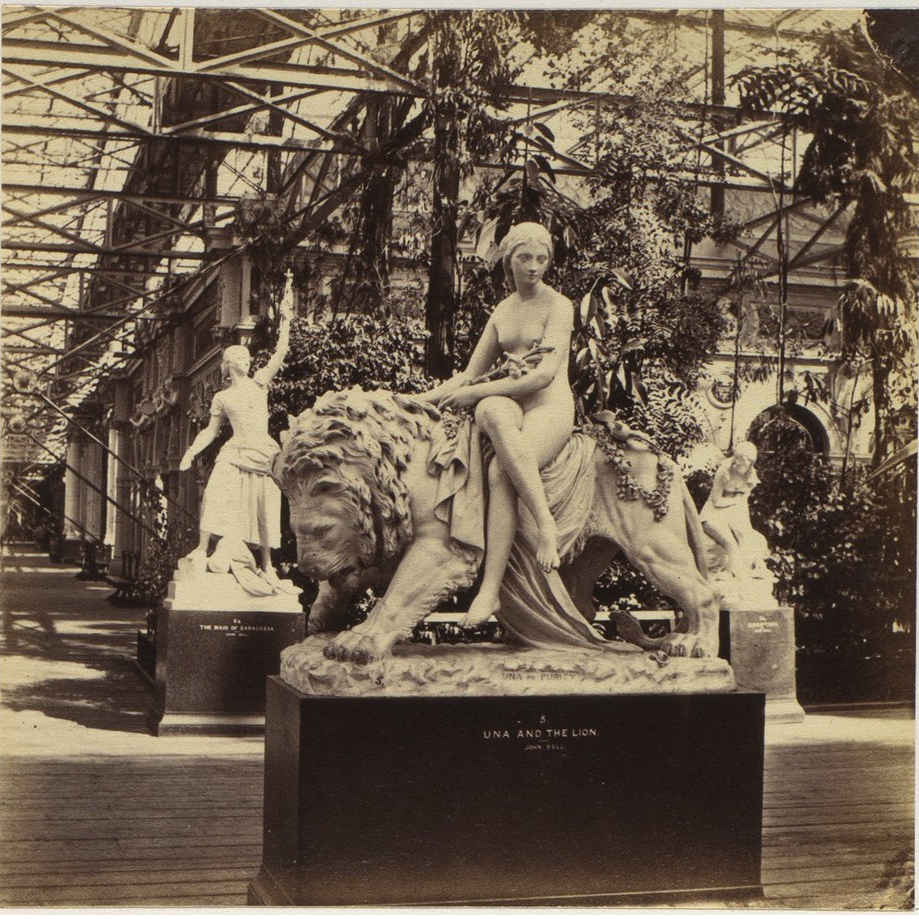
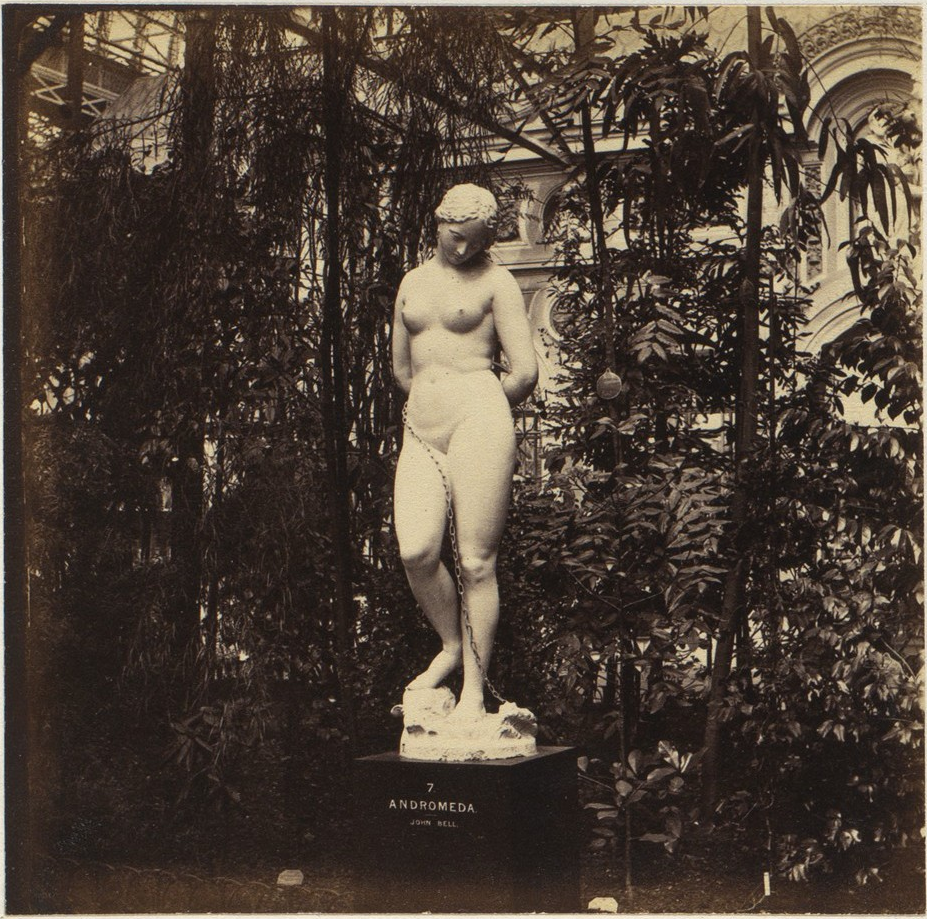


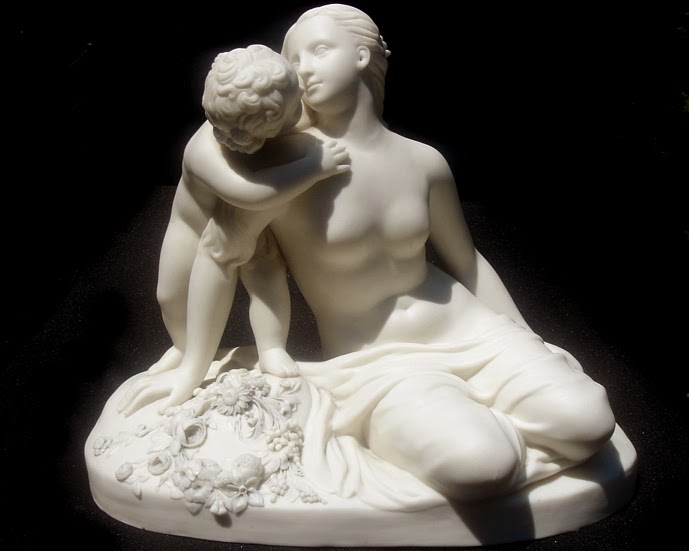
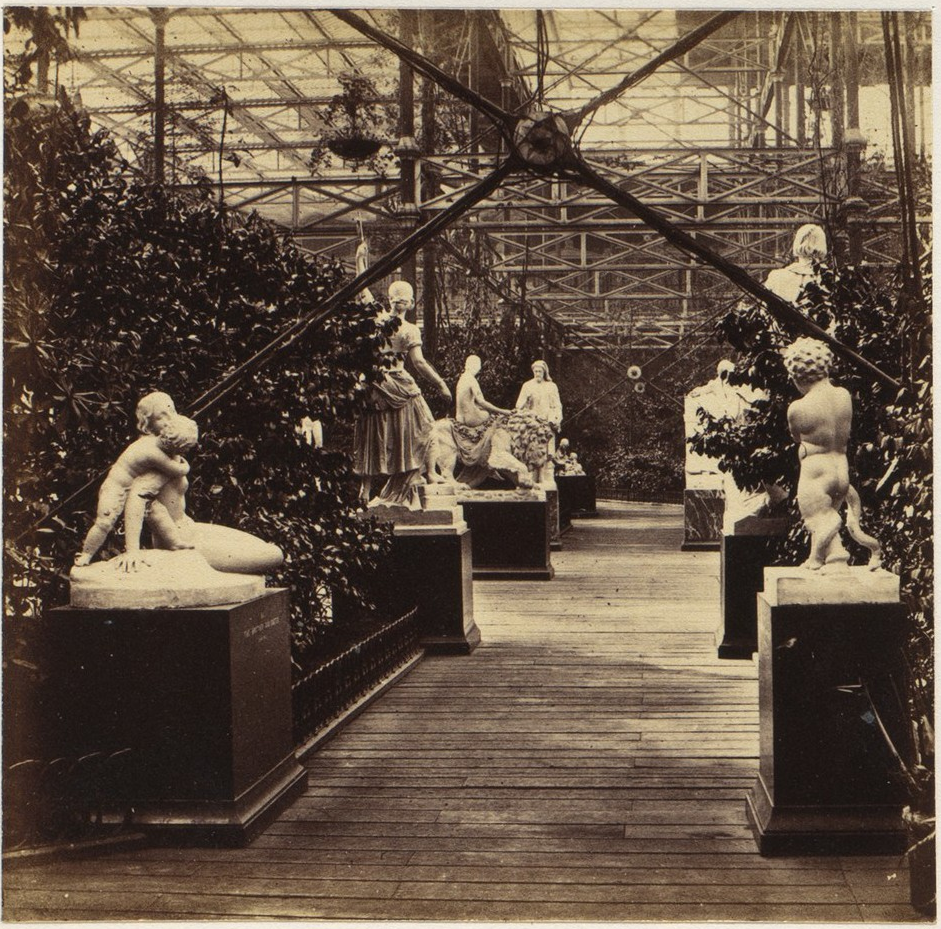
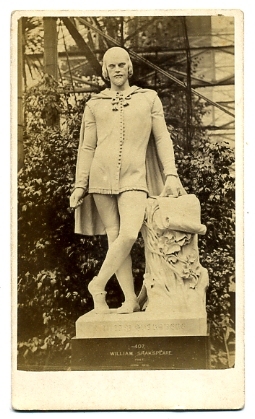

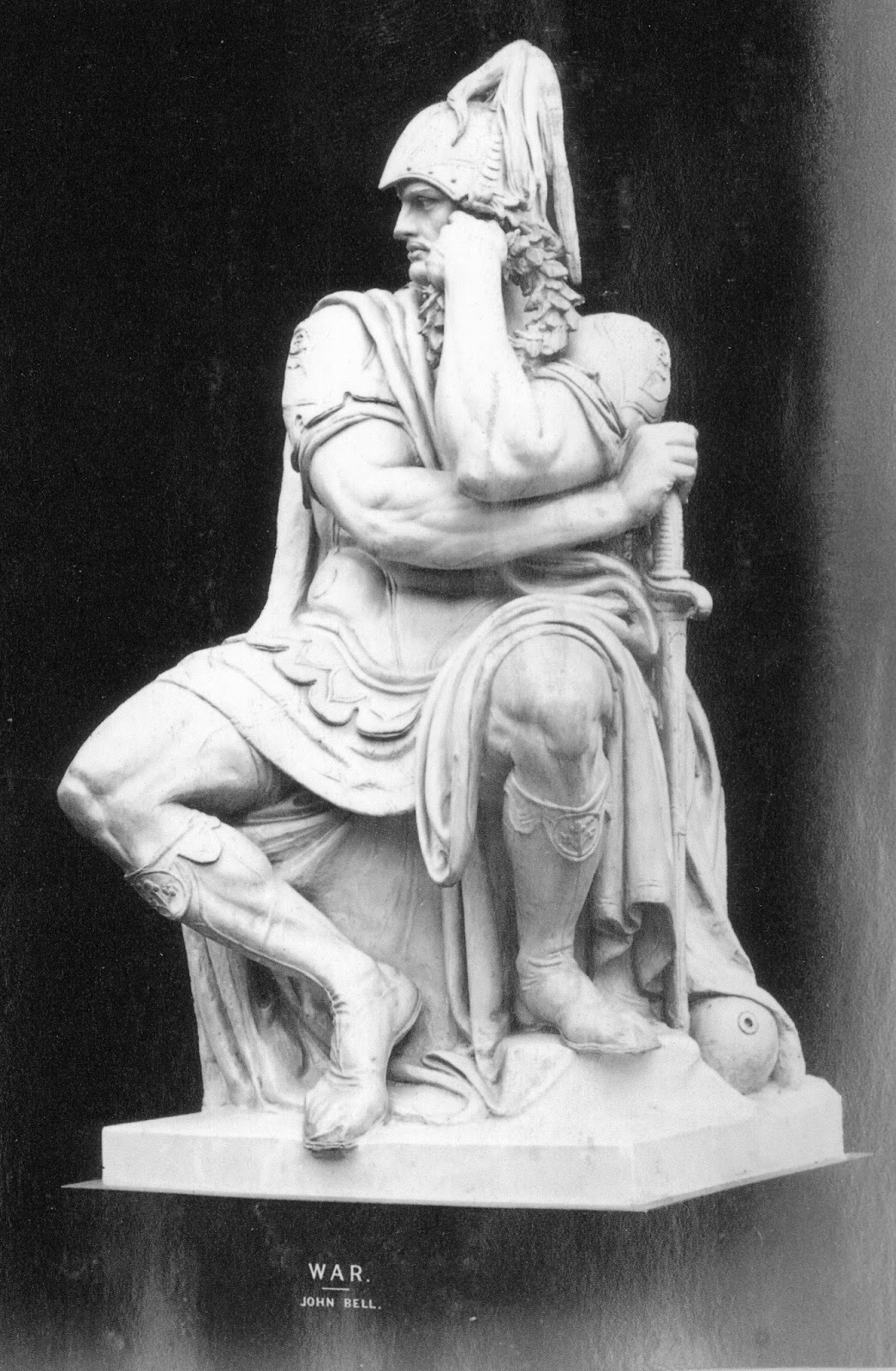

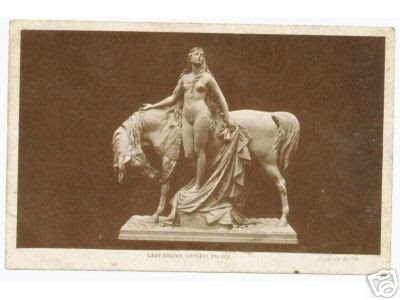

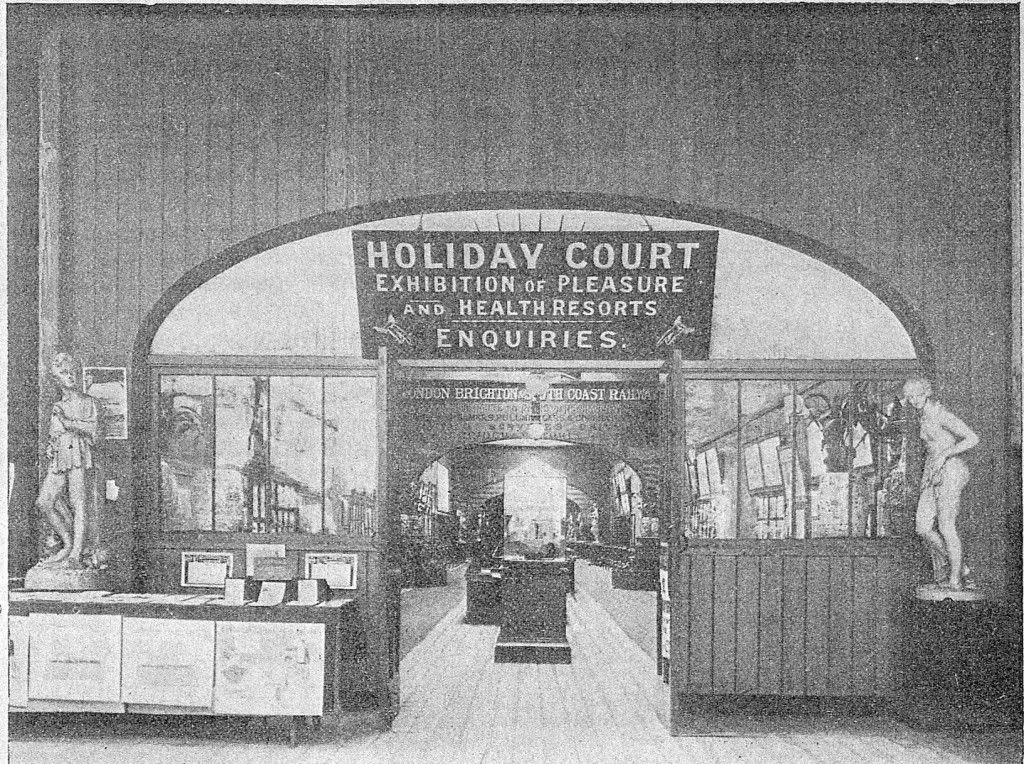


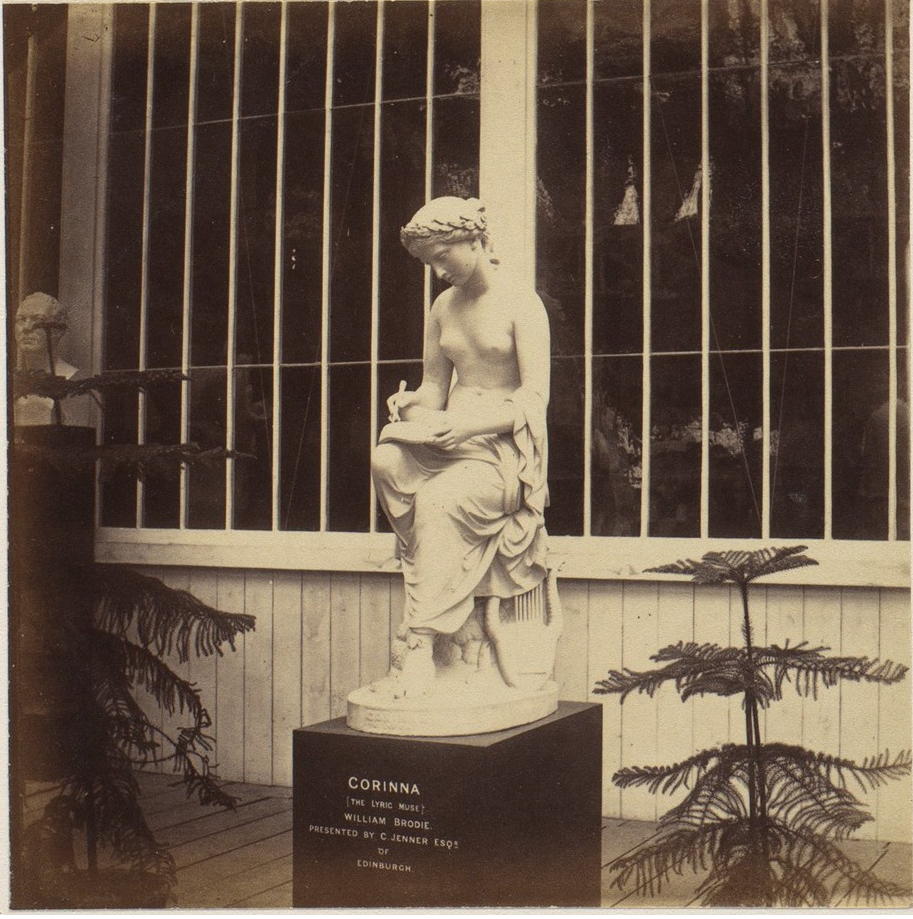

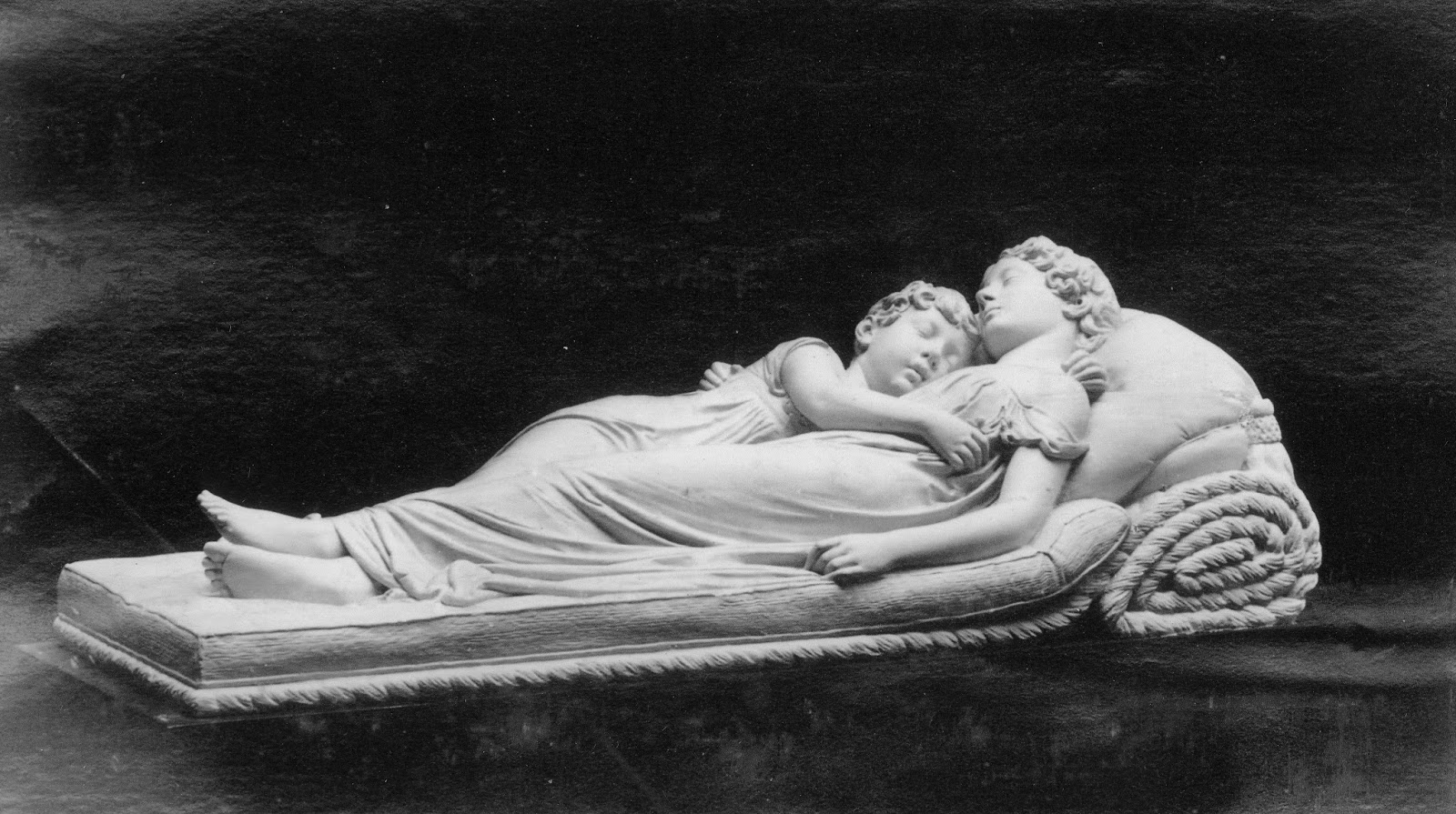


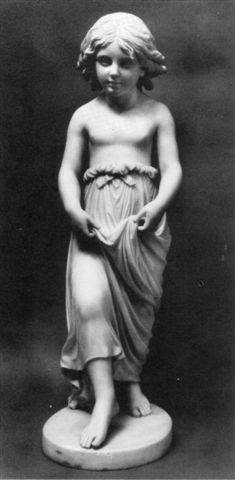
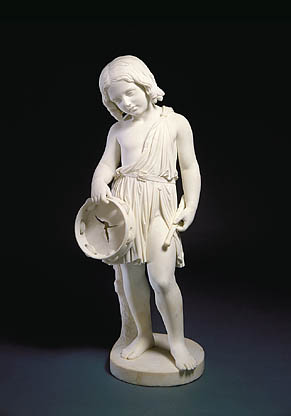
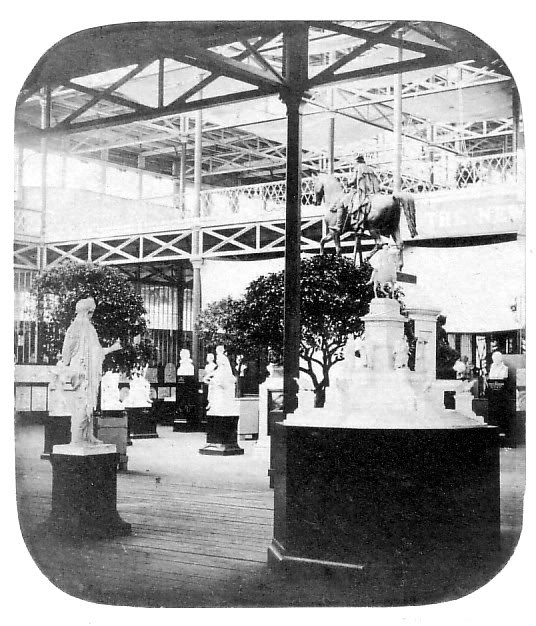

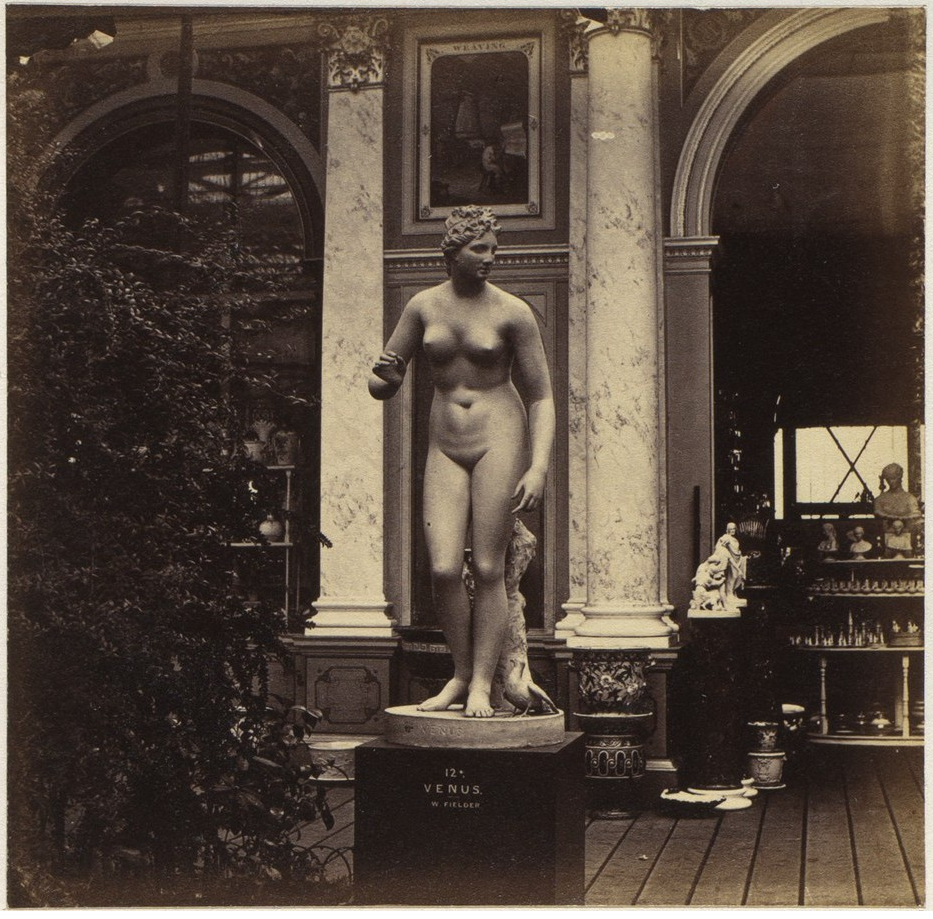
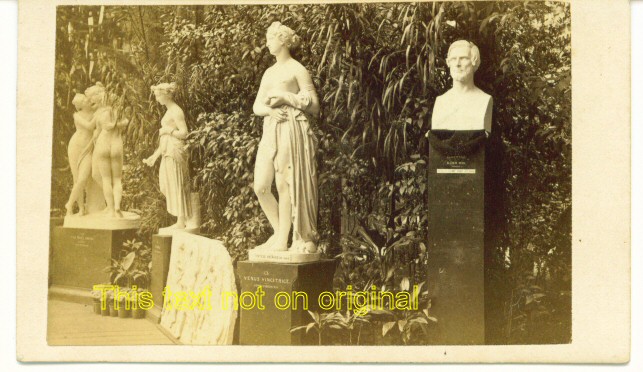
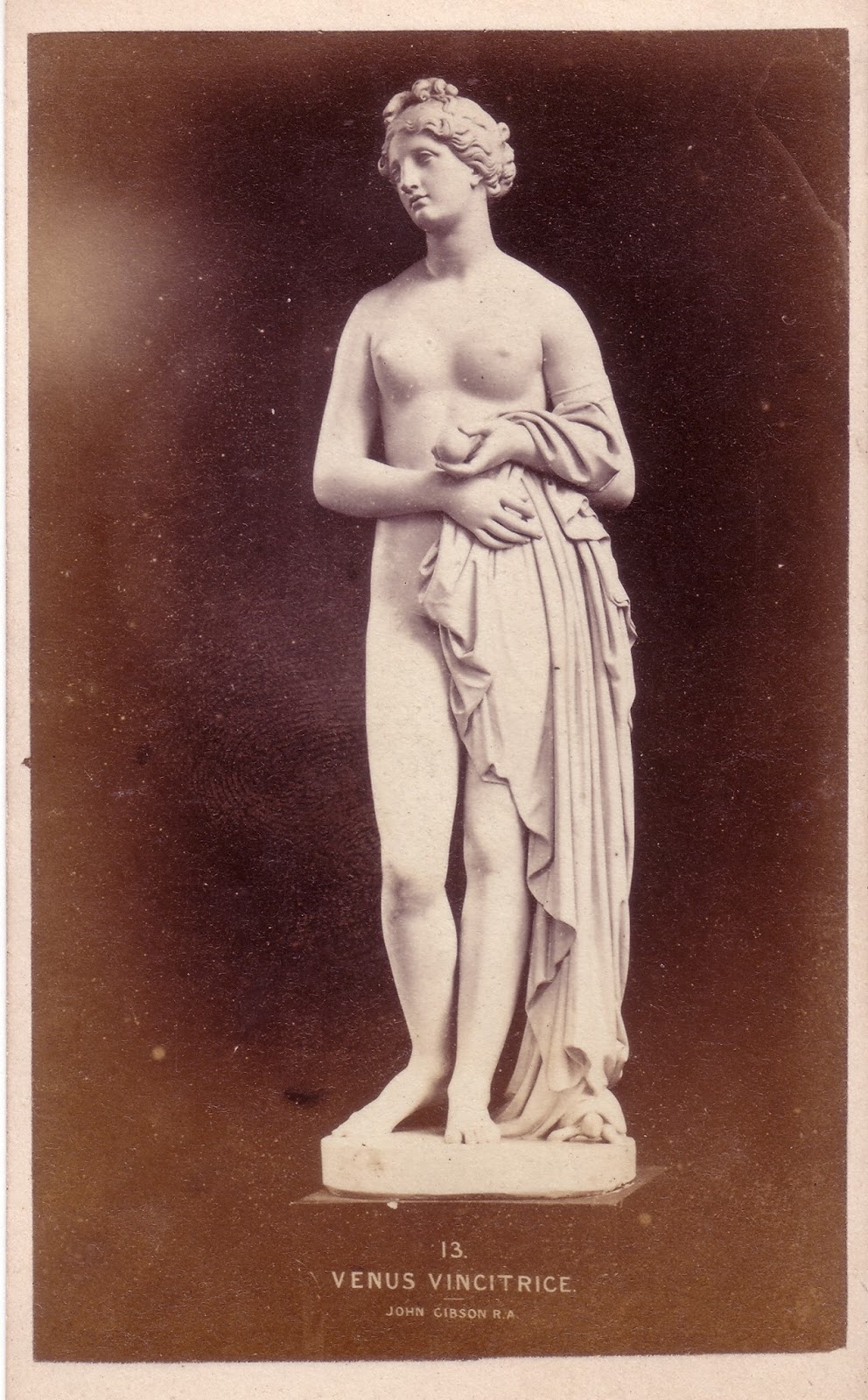

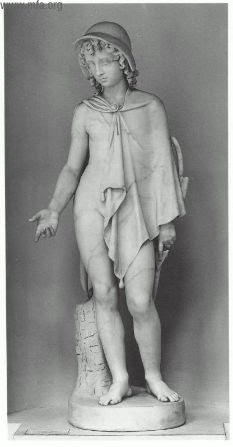
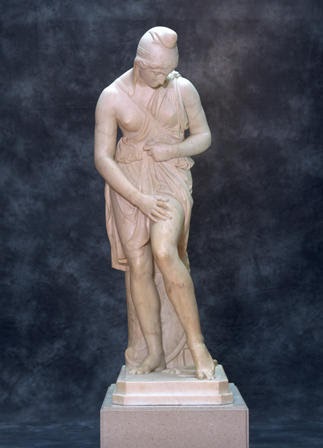
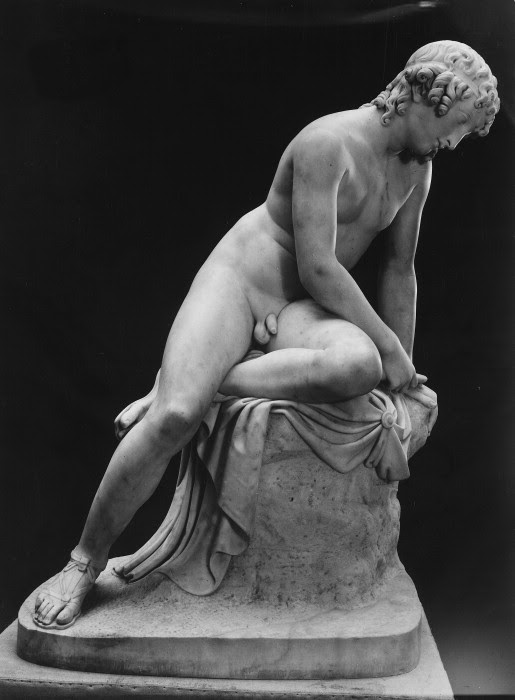
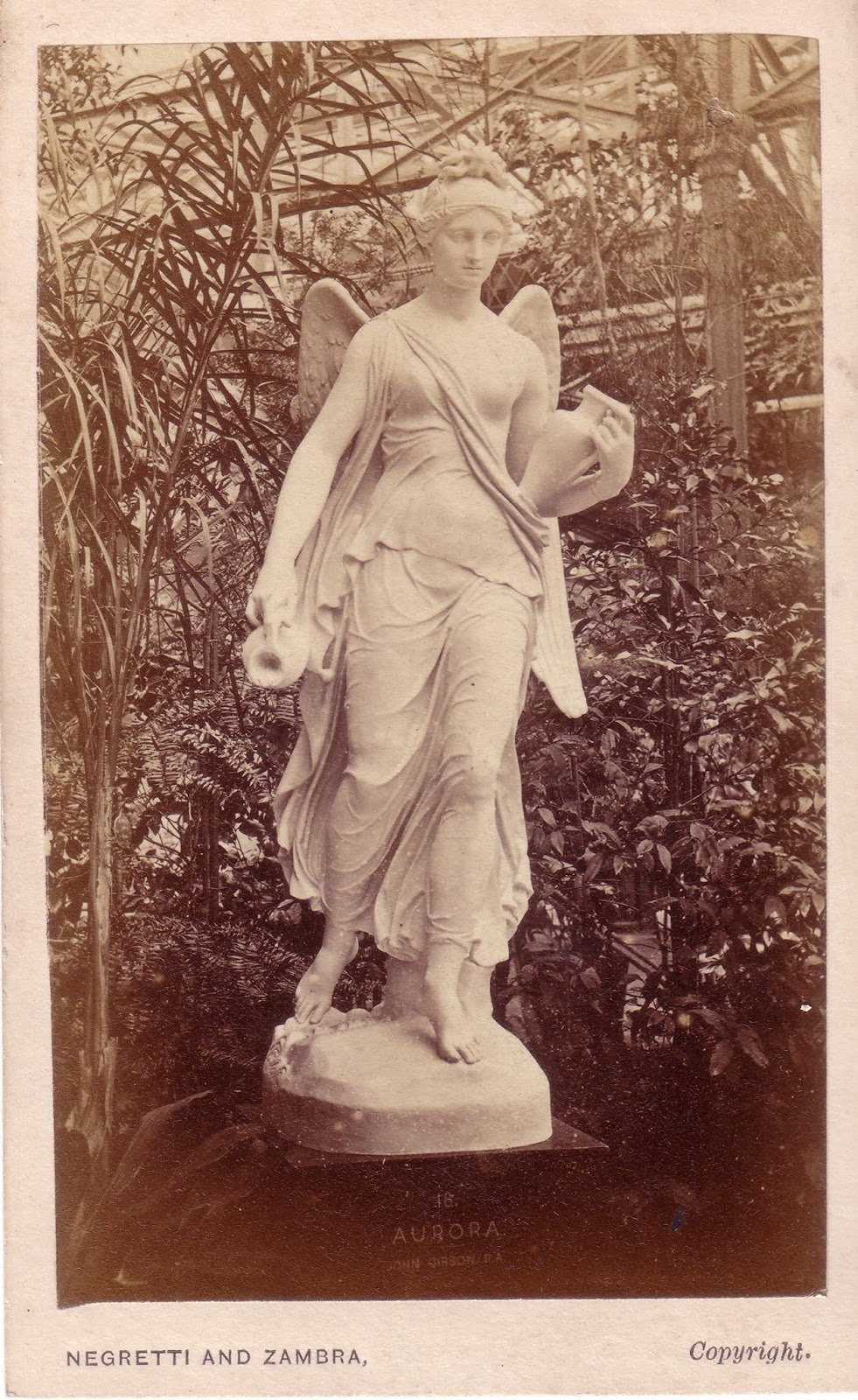


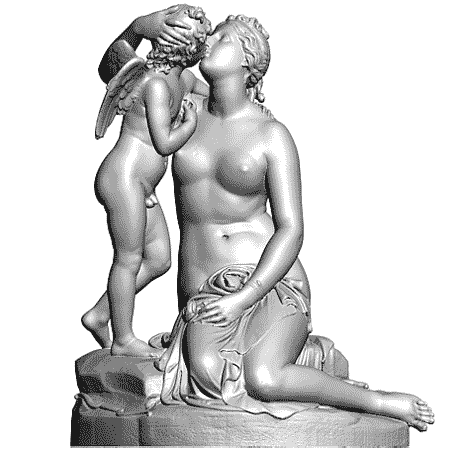
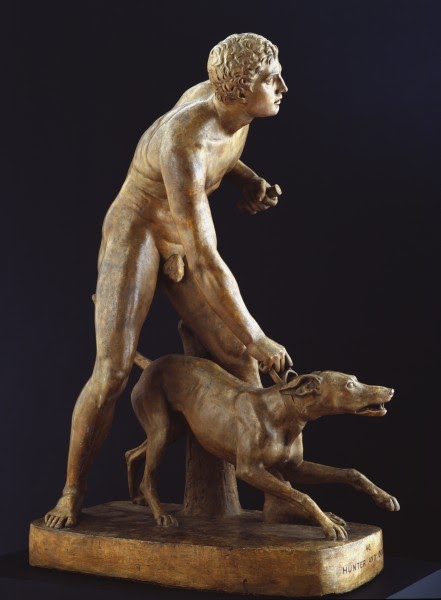



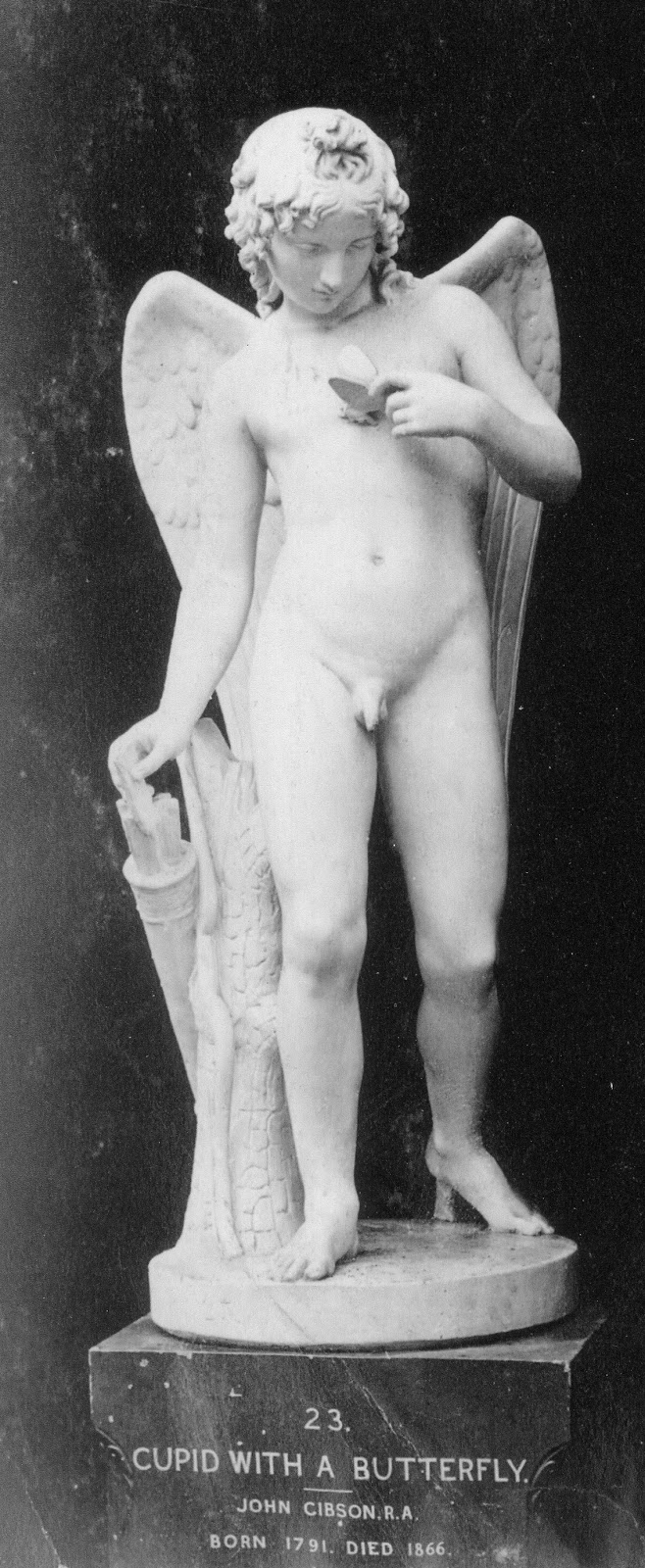
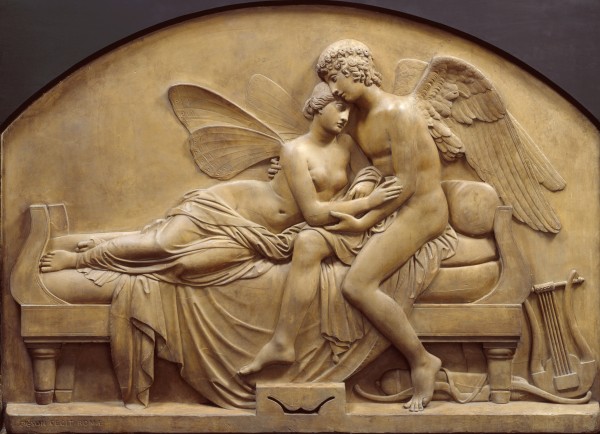

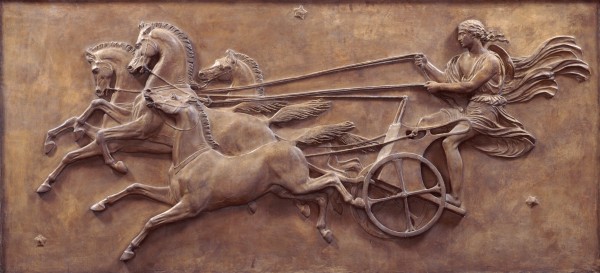



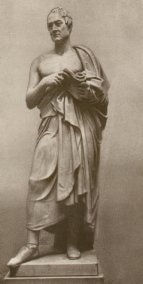
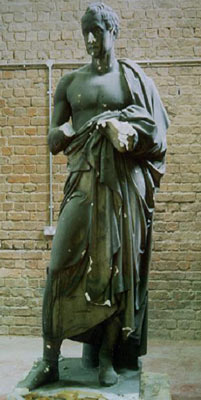

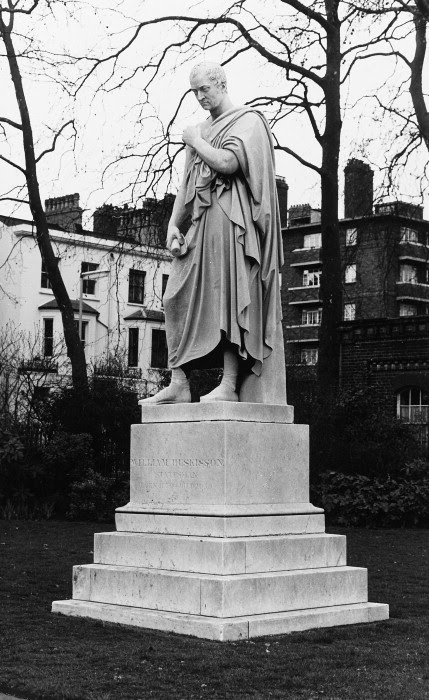

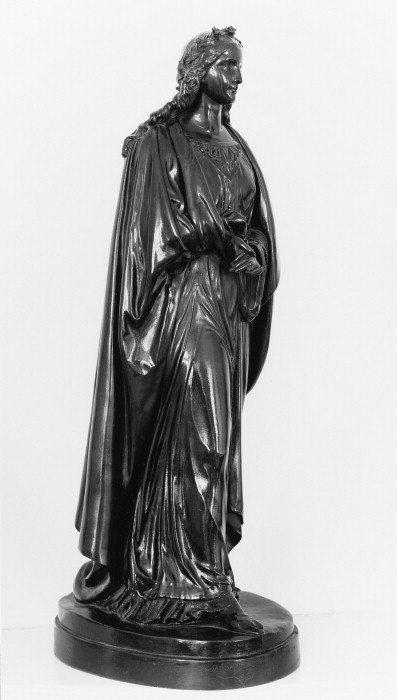
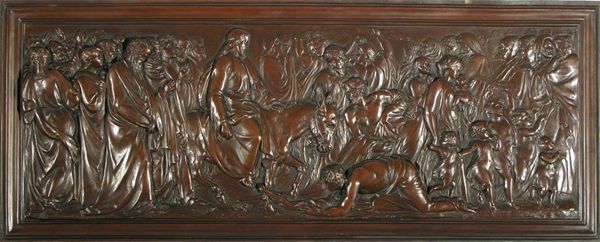



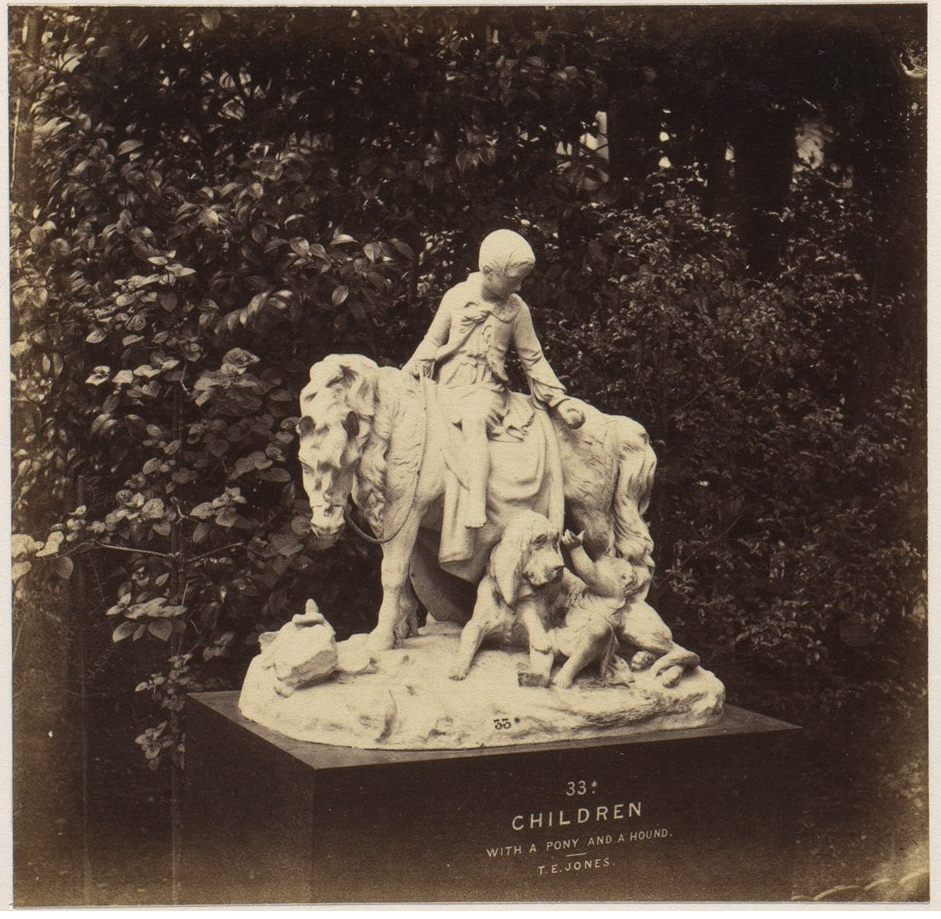

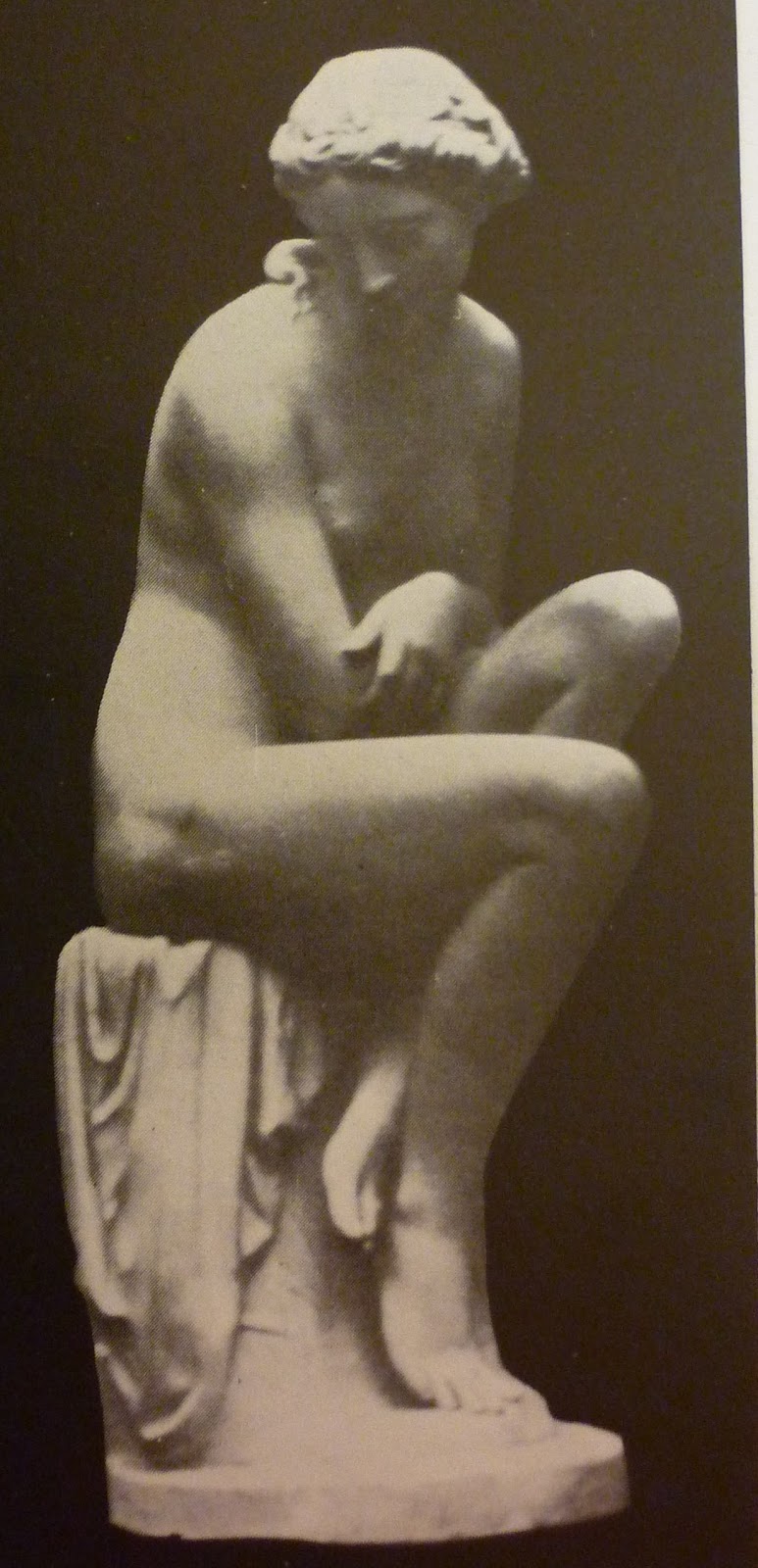 ]
]
